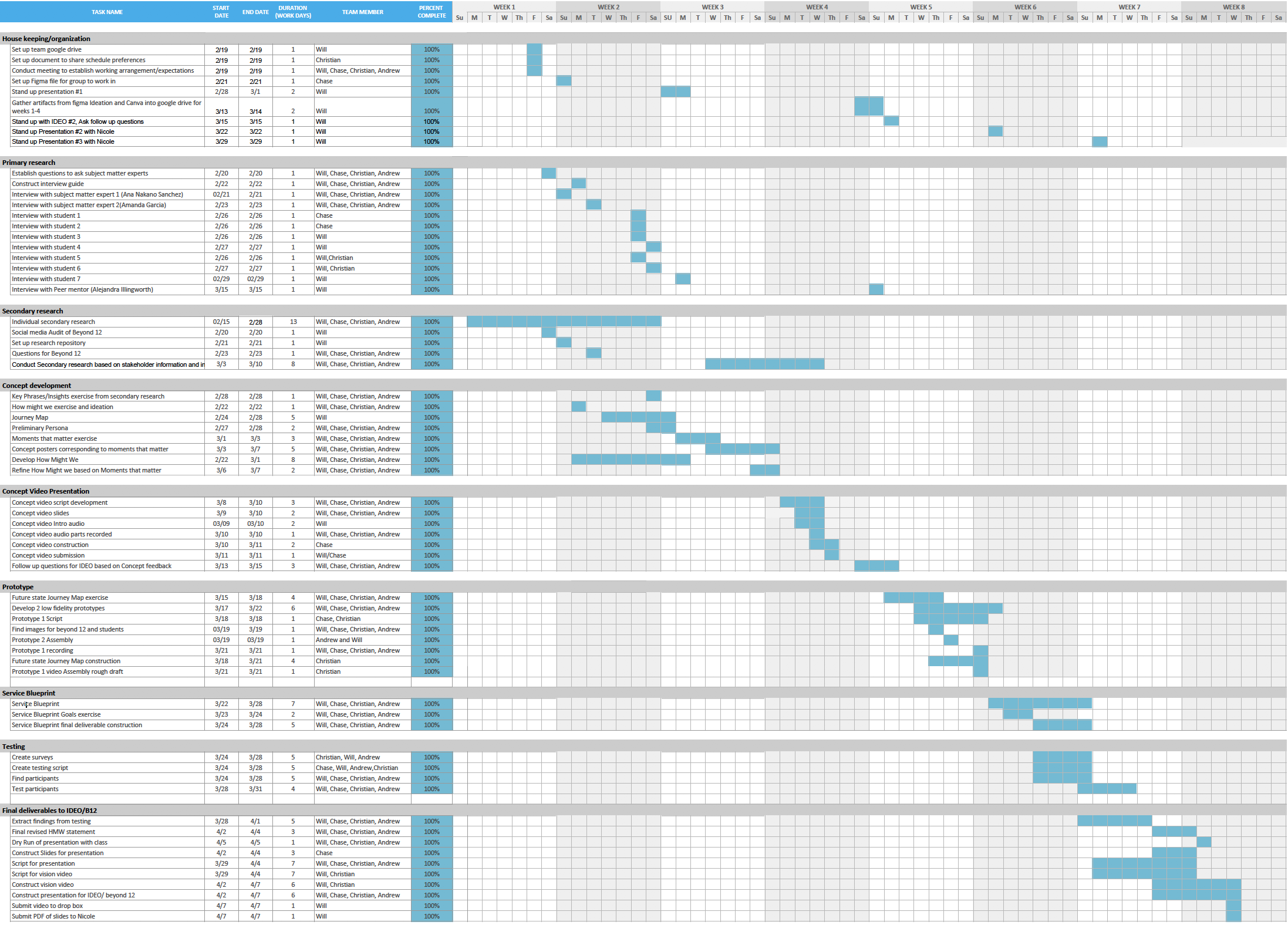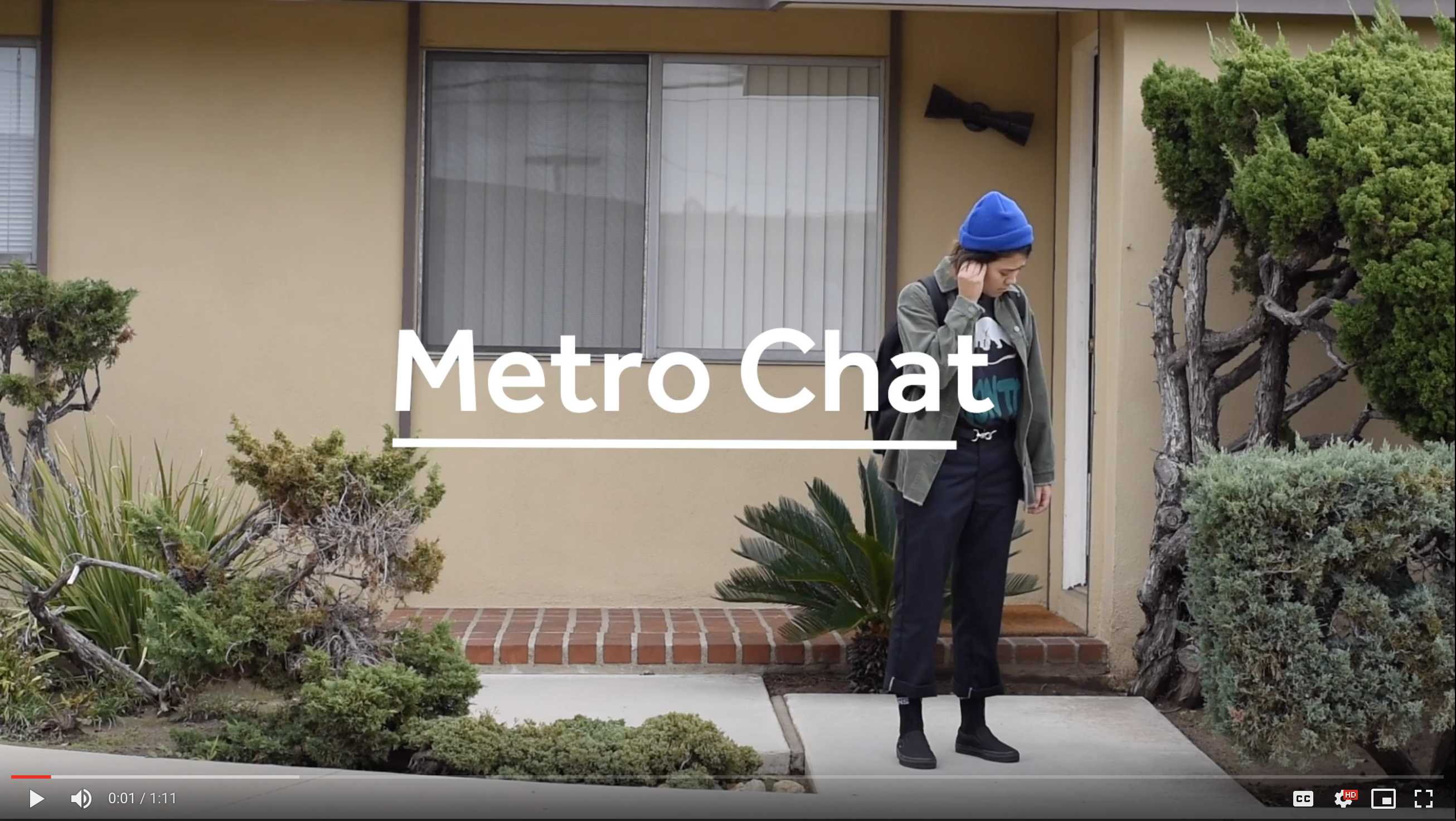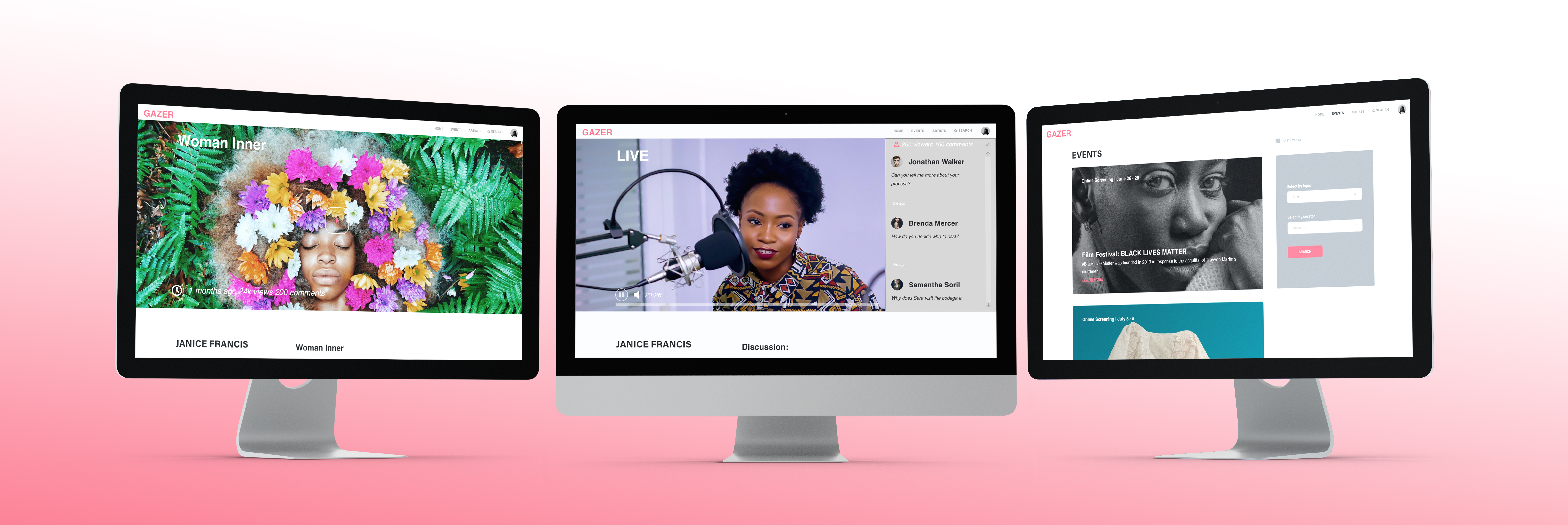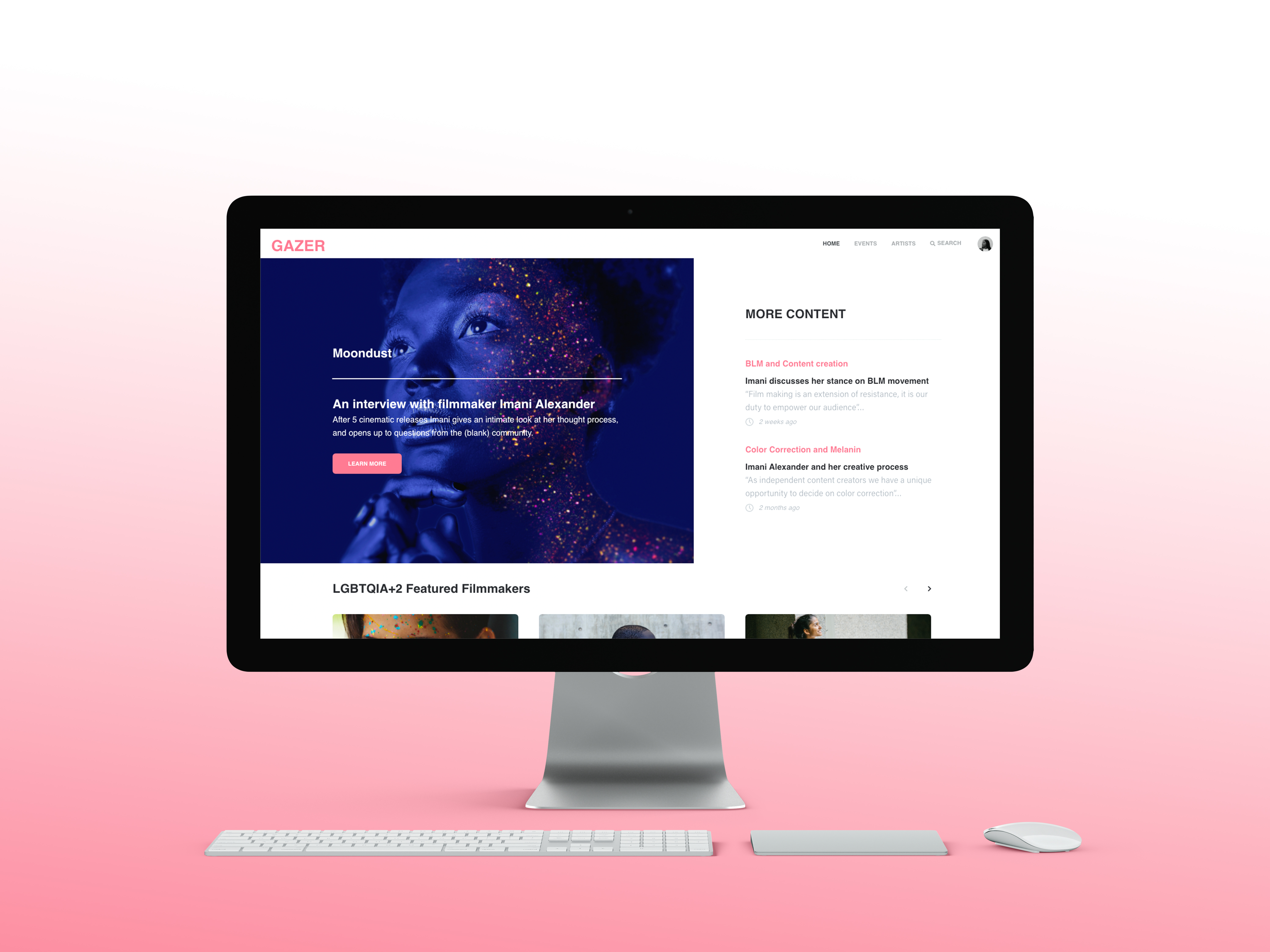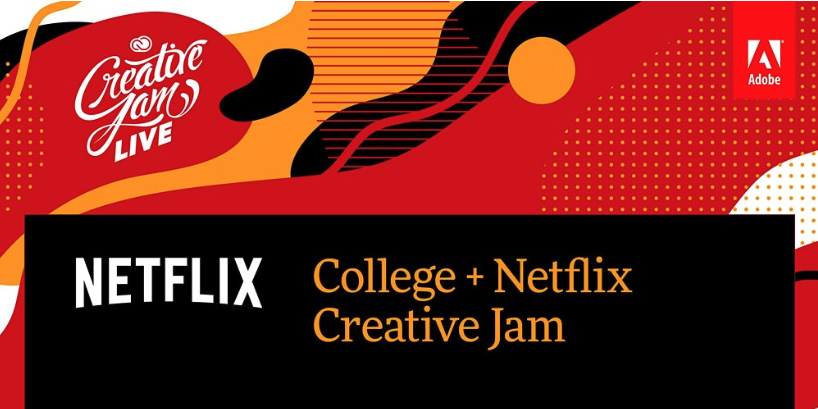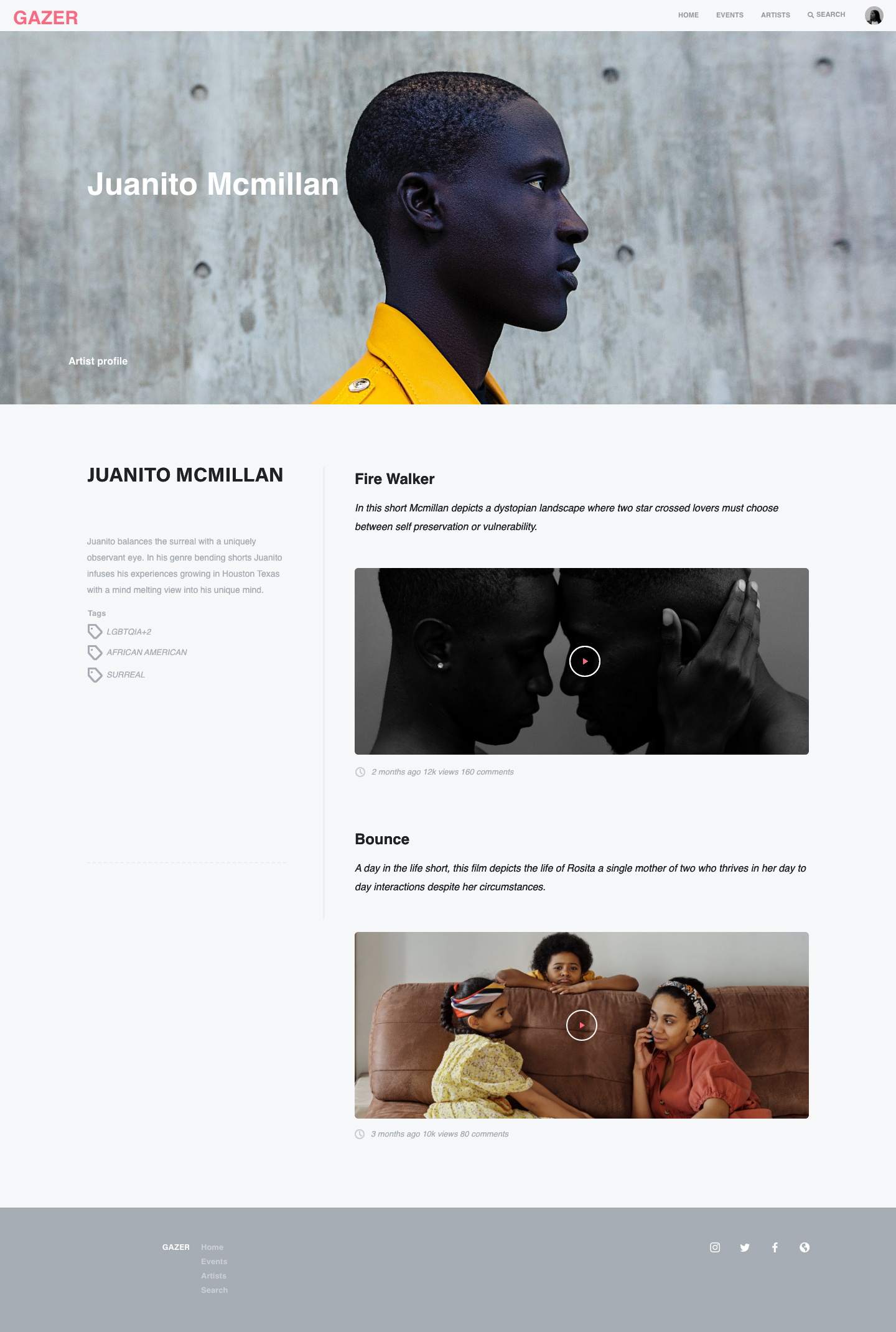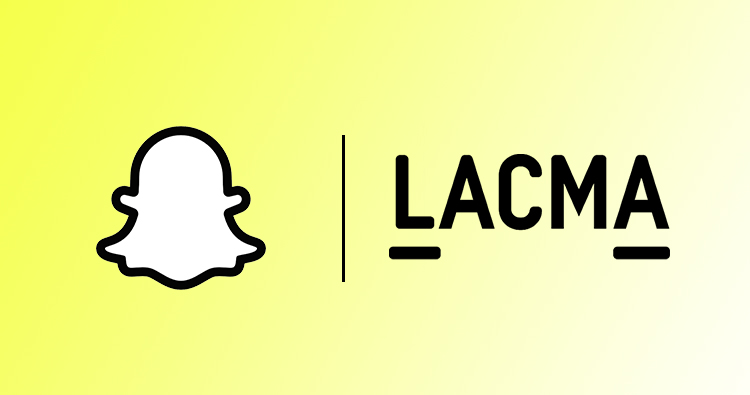
Snap / LACMA Augmented Reality Mural
Coming Soon

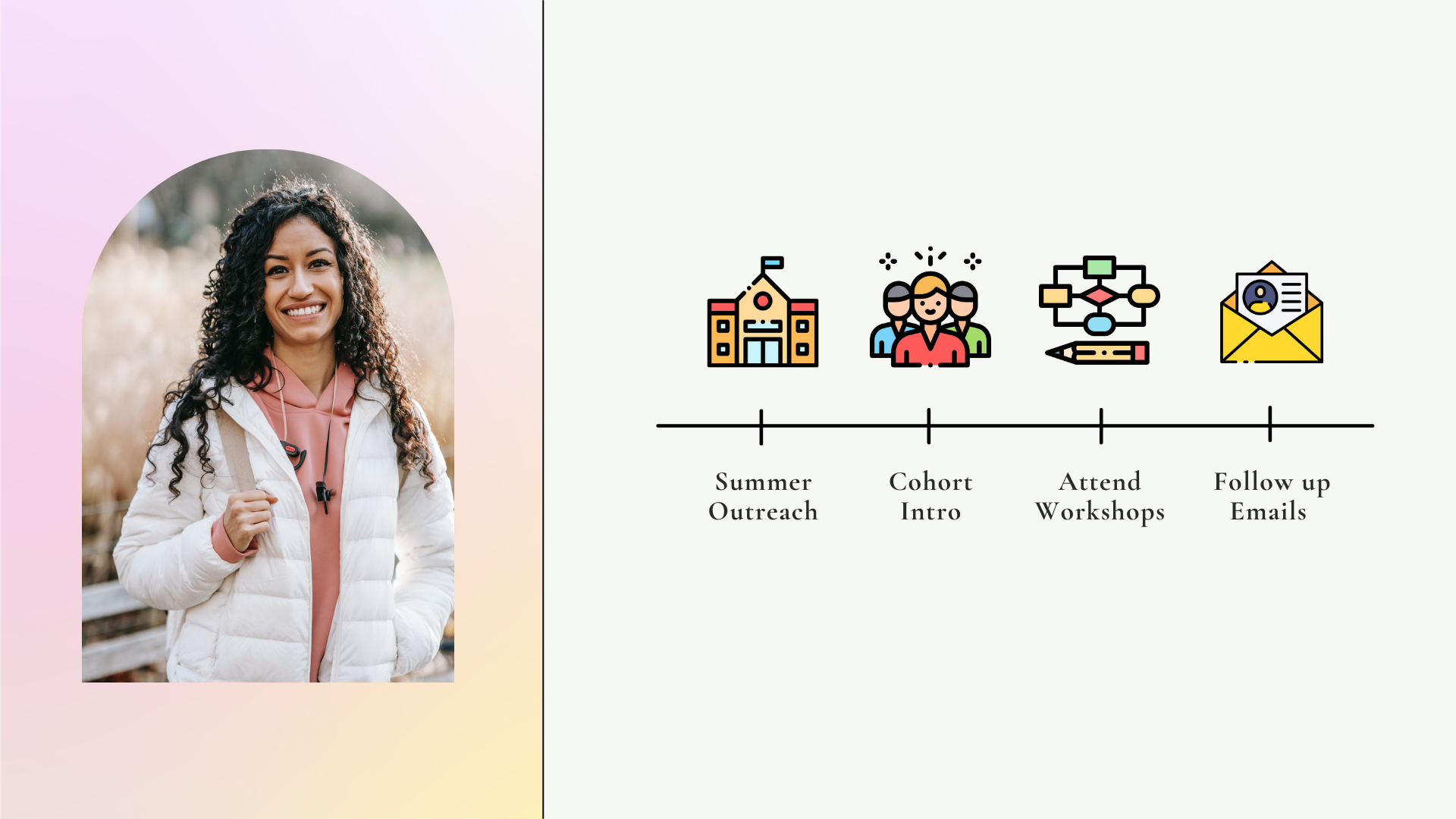
Beyond 12 Cohorts
Overview
Brief
“ How might Beyond 12 use its digital coaching platform to mobilize community college students to redesign their institutions so they are more accessible, affordable, inclusive, and relevant?”
Process
Stakeholder/subject matter expert interviews, Competitive analysis, Primary research, Secondary research, Prototype creation, testing and iteration, Remote user testing, file management, Social media audit, Standup presentations with stakeholders, Journey mapping, Persona development, Video construction, Service blueprint, Remote group ideation, Gantt chart creation and maintenance. Concept poster construction, Storyboarding, Survey construction, Project Management
Tools
Figma, Zoom, Google Suite, Adobe Photoshop, Adobe Illustrator, Airtable
Role
UX/UI designer, Content writing and strategy, Documentation, Researcher, Project manager, Project lead
Partners
Chase Nguyen, Christian Enriquez, Andrew Ma
Sprint Duration
8 weeks

Challenge
This service design project was a partnership between the Santa Monica College Interaction Design program and our industry partner IDEO to serve their client Beyond 12.
For this design sprint the focus was on finding methods to assist first generation community college students to make informed decisions.
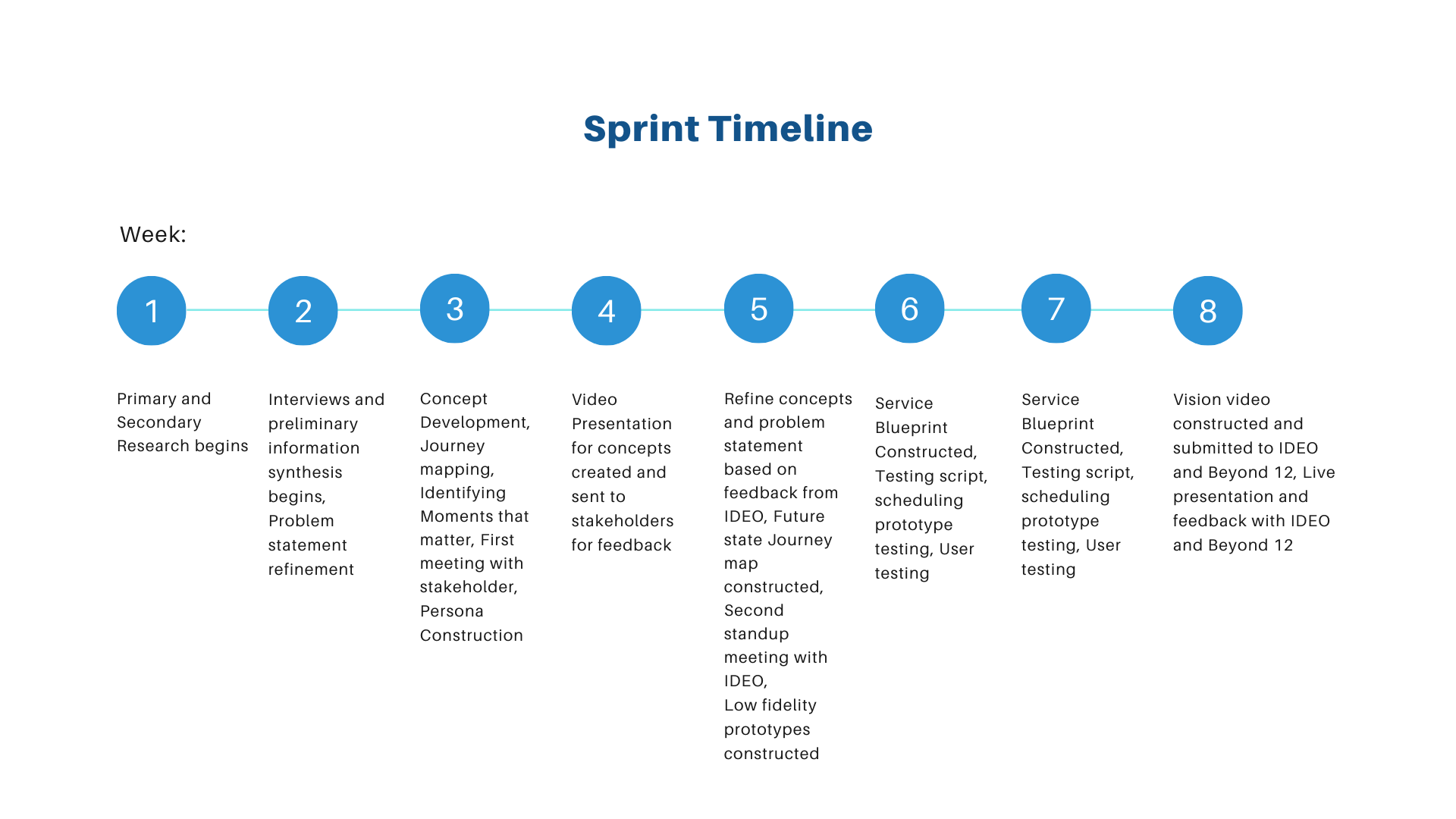
Preparation
Leading a team of 4 remote designers with wildly different schedules and skillsets during a pandemic would require careful collaboration and communication. I organized a kick off with my team, and created a space for us to discuss schedules, prefered methods of communication, group expectations and norms, shared file management and our strengths going into the project. We were able to quickly develop group norms, and with this shared understanding a unified tone and work ethic of open communciation and understanding was developed that would carry us through the project.
Figma, the Google suite of applications, Canva and Zoom video calls were our prefered collaboration tools, they afforded us the ability to work both collaboratively during intense group sessions or asynchronously. Asynchronous tasks were followed up with regular stand ups to ensure collective understanding amongst all members of the design team. I also established a Gantt chart that was regularly updated to clearly outline expected timelines and responsibilities for tasks.
Research
Understanding the tone and values of Beyond 12 was one of the first items to address. I conducted a social media audit of Beyond 12, Santa Monica College, as well as competetors within this space. The goal was to extract key phrases, and identify areas that the brand prioritized when communicating with students.
Beyond 12 current business model favors a personalized, direct connection with students supported by data models that identify timely moments for intervention by their staff.
They highlighted inclusivity and looked to improve persistence rates within marginalized groups that have historically been at risk for stops outs in their college journey. Their efforts focused largely on reaching first generation students.
I saw an opportunity to address mutually overlapping interests among Beyond 12 and Santa Monica College.
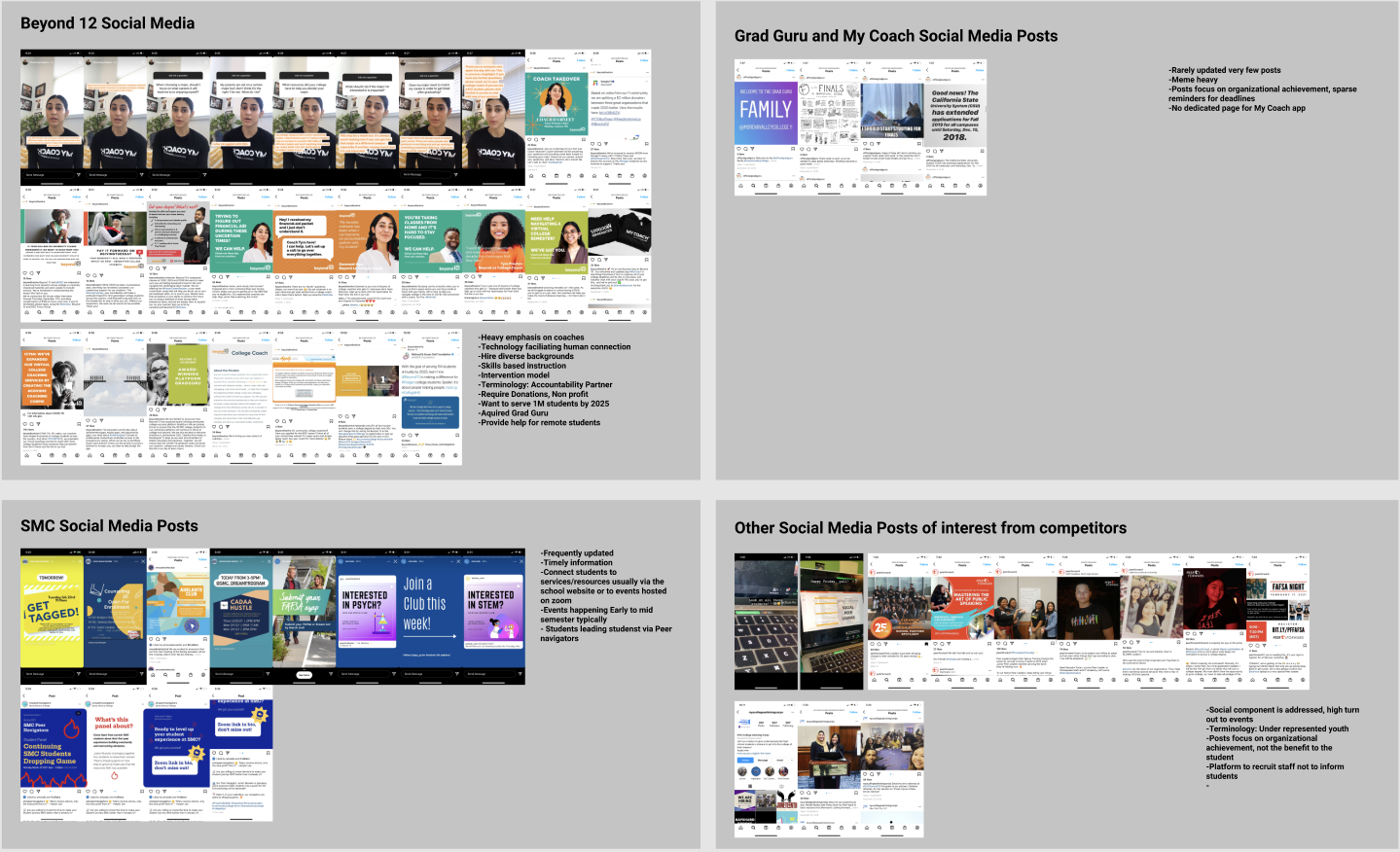
Social Media Audit
Primary and secondary research was conducted by all members of the design team throughout our sprint. To ensure none of our work was lost or removed from it’s context I created a repository within our shared team drive. This repository stored links, keyphrases and provided a shared space to uncover opportunities to advance our research while expanding our knowledge within an area that is saturated with research.
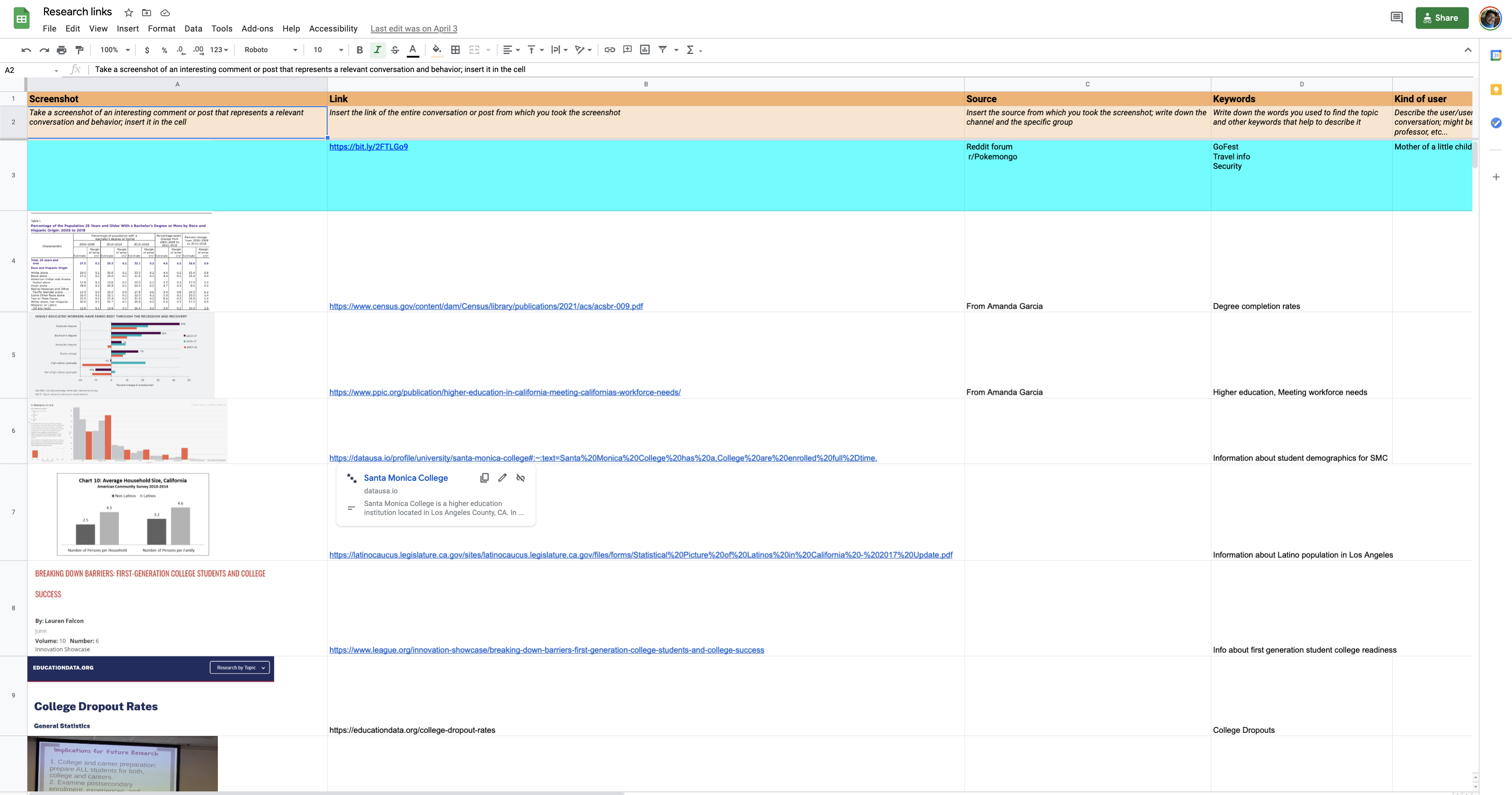
Screenshot of Group Research Repository
To ensure that we would have a better understanding of the constraints and expectations surrounding community colleges, college persistence and potential pain points for first generation students, I arranged meetings with two subject matter experts.


Excerpts from Interviews with Subject Matter Experts
Ana Nakano Sanchez and Amanda Garcia
Ana Nakano Sanchez and Amanda Garcia
We also reached out to first generation students. We asked them what their college journey looked like, what their pain points were, what their existing support networks were and what resources they knew about or utilized from their schools.


Concept Development
To convey our idea to the stakeholder, multiple exercises were employed to ensure we were communicating our reseach as clearly and concisely as possible. These efforts would eventually be presented to the designers from IDEO in a short pitch video so that we could receive feedback and refine our eventual proposed solution.
- Development of our Persona (Sophia Hernandez)
- Identified shared moments that mattered within the education journeys that were shared with us
- Constructed initial problem statement that expanded on our brief.



Moments That Matter, Persona, Problem Statement

Student Journey Map
I constructed a Journey map that incorporated the key moments we identified and also established a timeline for our persona. This document would serve as a artifact the design team would look back to often, ensuring that subsequent artifacts constructed by the team spoke directly to the pain points our interviewees shared with us.
We created concept posters based on vulnerable moments first generation college students reported encountering during their college journeys.
The idea was to have multiple concepts to present to IDEO and Beyond 12, and utilizing their feedback to narrow our focus going forward.
We focused heavily on establishing the story for our persona so that it would be representative of the pain points and feelings of frustration and isolation shared with us by the students we interviewed with.
The idea was to have multiple concepts to present to IDEO and Beyond 12, and utilizing their feedback to narrow our focus going forward.
We focused heavily on establishing the story for our persona so that it would be representative of the pain points and feelings of frustration and isolation shared with us by the students we interviewed with.



Concept Posters
The Problem
First generation students attending community colleges are vulnerable at multiple points in this new journey, a lack of information to make timely decisions can oftentimes lead to reactionary decisions that create a disconnect between academic and career goals.
Utilizing audio clips from our interviews, and insights from our research we created a video presentation that would quickly communicate our three concepts to the team at IDEO.
Concept Pitch Video
Feedback
The team at IDEO was very pleased with our work and expressed an interest in having our team advance the concept for a Beyond 12 cohort.
They felt the idea was strong because it:
- Focused on getting students off to the right start
- Was a well supported and compelling emotional story that also showcased our research
- Identified the underlying confidence issue for first generation students
- Addressed issues of loneliness for students
- Alieviated the burden placed upon educational institutions
- Identified a space in the student journey that is not being currently addressed.
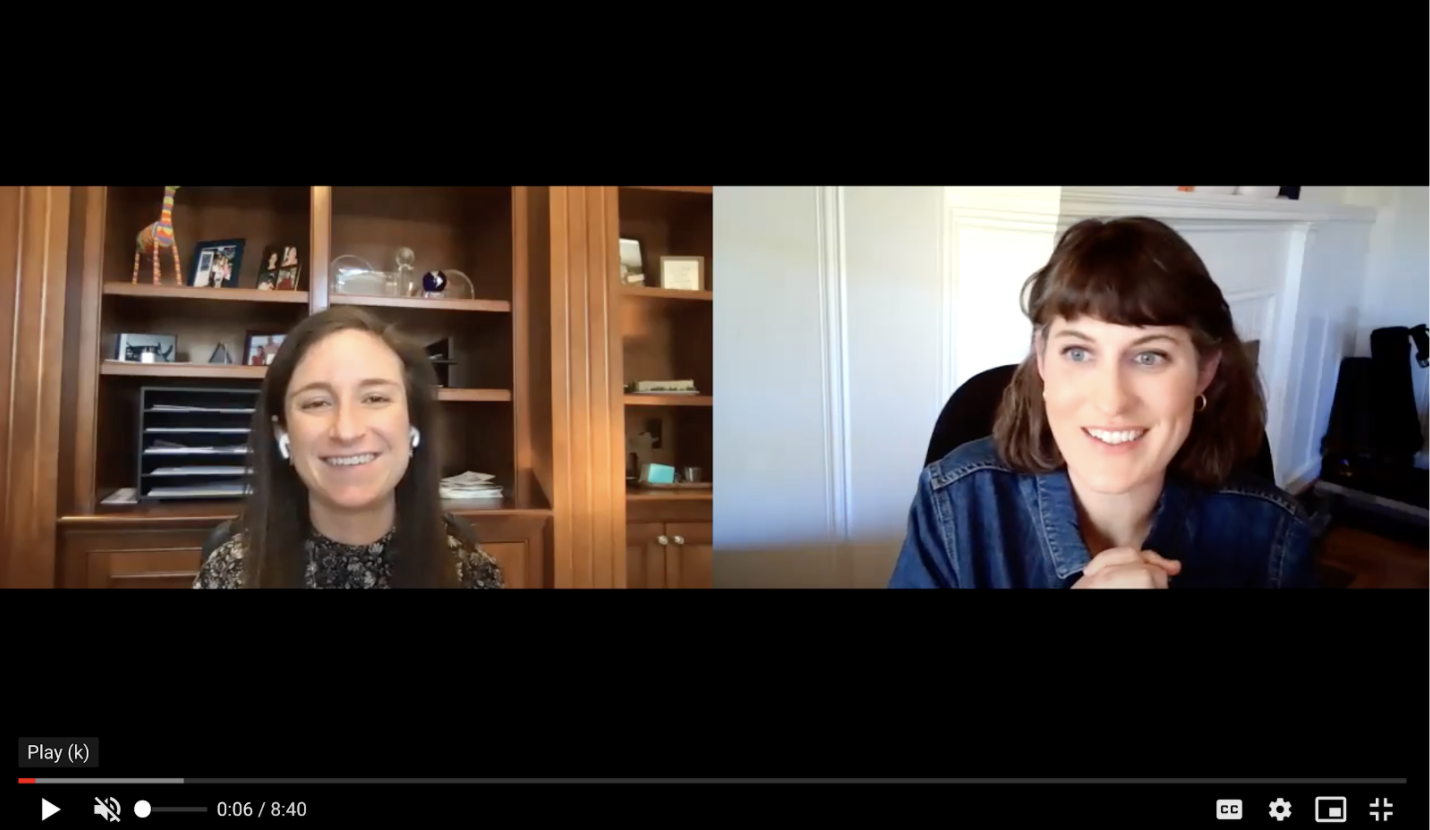
“ It’s a psychology issue that is ripe for design” -Rachel Young (director at IDEO)
They challenged us to prototype this as quickly and efficiently as we could using existing platforms (discord and whatsApp were discussed) to assist our efforts. They asked us to be mindful of cultivating a space where the shame behind asking a question or not knowing an answer for a first generation student could be reduced.
Prototyping
My teammates and I constructed a service blue print to get a better understanding of the various interactions and timelines present during the Beyond 12 cohort concept.
The service blueprint would serve as a unifying document for my team. We would go back to it often to ensure that the scope of our protypes would fit within the expected timeline and interactions for our peer cohort concept.
![]()
Prototyping
My teammates and I constructed a service blue print to get a better understanding of the various interactions and timelines present during the Beyond 12 cohort concept.
The service blueprint would serve as a unifying document for my team. We would go back to it often to ensure that the scope of our protypes would fit within the expected timeline and interactions for our peer cohort concept.

Service Blueprint
Armed with a better understanding of the various interactions presented by the Beyond 12 cohorts concept I wanted to understand what an ideal interaction would be for our intended user.
A future state journey map was constructed prior to our low fidelity prototypes to further address the users needs going into prototyping.
A future state journey map was constructed prior to our low fidelity prototypes to further address the users needs going into prototyping.

Future State Journey Map
I led my team through an exercise to prioritize the potential benefits of different prototyping ideas. We listed ideas and then ranked them together on an impact/effort scale.
We wanted to test multiple prototypes but given the length of our sprint I wanted to keep the team focused on solutions that would provide the most potential reward while being mindful of our time constraints.
We wanted to test multiple prototypes but given the length of our sprint I wanted to keep the team focused on solutions that would provide the most potential reward while being mindful of our time constraints.
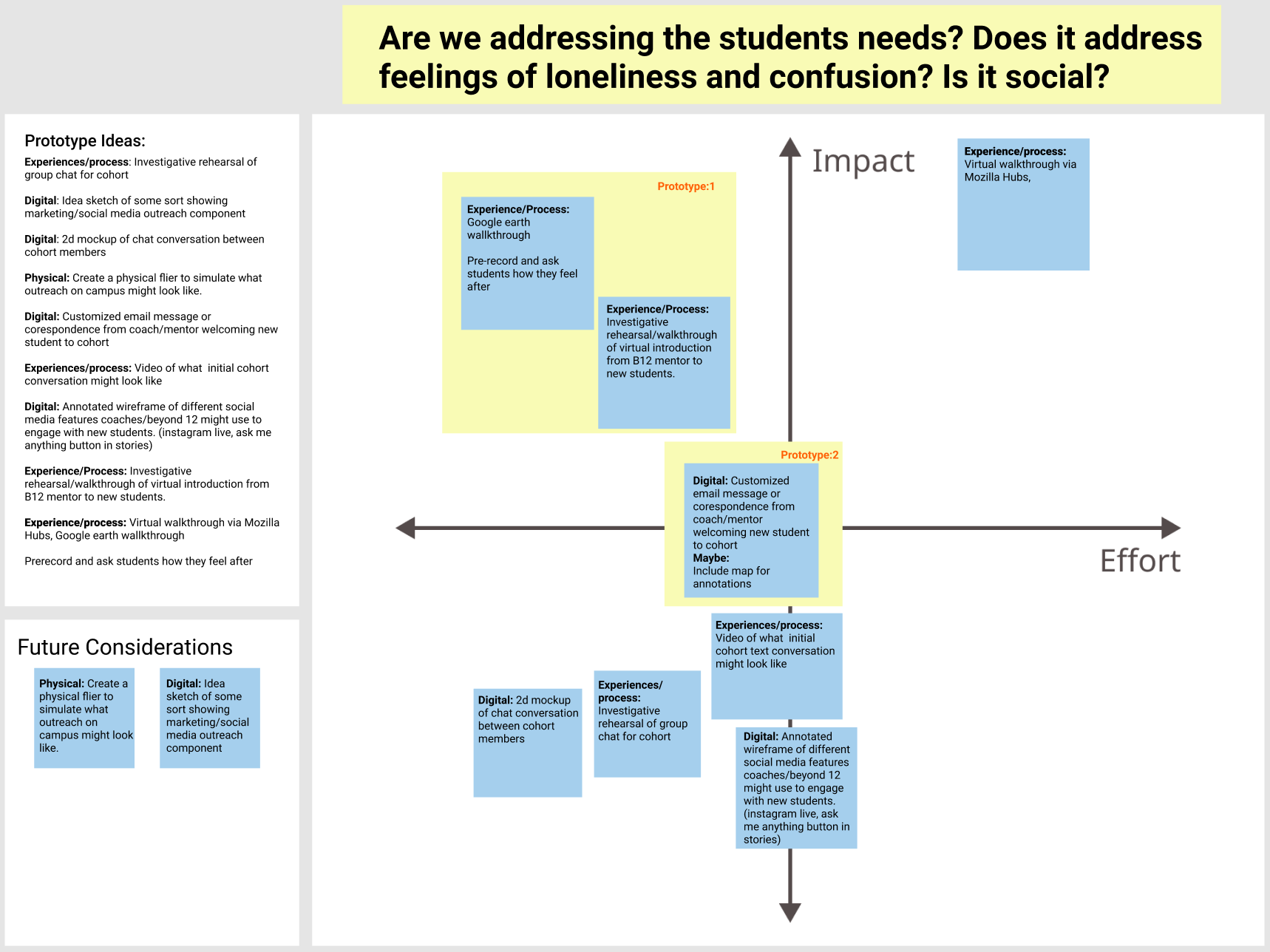
Impact Effort Exercise
I constructed a mockup of what the first touchpoint with a student might look like as well as the follow up after an event.
Careful attention was placed on the content contained within these emails.
We wanted to provide value to a first generation student. The correspondence needed to be warm, inviting, informational and above all else present an opportunity for a high reward and low risk environment for new first generation students.
These correspondences with a new first generation student were intended to support the Virtual Walkthrough event the Beyond 12 cohort would experience together.
Careful attention was placed on the content contained within these emails.
We wanted to provide value to a first generation student. The correspondence needed to be warm, inviting, informational and above all else present an opportunity for a high reward and low risk environment for new first generation students.
These correspondences with a new first generation student were intended to support the Virtual Walkthrough event the Beyond 12 cohort would experience together.


Email mockups
The simulated virtual walkthrough was partially a product of the state of the world, creating a walkthrough of a campus during a pandemic necessitated a remote solution.
We opted to guide our testing participants through a virtual walkthrough that simulated what a virtual group event might look like.
We utilized google streetview, and Zoom to introduce new students to the services housed within a campus.
The content for this prototype was a primary concern when developing this prototype. We looked at crucial services a new student would need to tap into, and developed a script and map that would introduce new students to the resources available to them through guided workshop events that were short but also informational.
This scripted approach allowed us to establish consistency when we asked our testing participants for feedback.
We opted to guide our testing participants through a virtual walkthrough that simulated what a virtual group event might look like.
We utilized google streetview, and Zoom to introduce new students to the services housed within a campus.
The content for this prototype was a primary concern when developing this prototype. We looked at crucial services a new student would need to tap into, and developed a script and map that would introduce new students to the resources available to them through guided workshop events that were short but also informational.
This scripted approach allowed us to establish consistency when we asked our testing participants for feedback.
 Screenshot from Virtual Walkthrough
Screenshot from Virtual WalkthroughTesting
I reached out to first generation college students that had never attended the Santa Monica College campus in person.
A survey was constructed using airtable that we sent out to various discord servers that students were known to participate in. We asked those students to reach out to their networks and encourage individuals who were in the decision making phase of starting their college journey to test with us.
We were able to test several participants from diverse backgrounds who had never been on campus, that were interested in Santa Monica College and that also had no prior college experience.
Finding a testing population that would be representative of the new students we were hoping to reach with Beyond 12 cohorts was our primary goal going into testing.



Screenshots from Prototype Testing
Reception
Surveys were administered before and after testing participants were introduced to the prototypes to determine their level of confidence completing crucial college tasks and accessing resources. We also provided a space for our participants to share what worked and what didn’t about the prototypes they experienced.
Our participants reported an average confidence level of 2.3 out of 5 in completing crucial tasks before being exposed to our prototypes.
Their average confidence level in completing tasks jumped to a 4.6 out of 5 after being introduced to the prototypes.
The reception was positive overall and the main change requested was a desire to have access to the map we provided after the walkthrough event, before the event so they could follow along with it.
Our participants reported an average confidence level of 2.3 out of 5 in completing crucial tasks before being exposed to our prototypes.
Their average confidence level in completing tasks jumped to a 4.6 out of 5 after being introduced to the prototypes.
The reception was positive overall and the main change requested was a desire to have access to the map we provided after the walkthrough event, before the event so they could follow along with it.
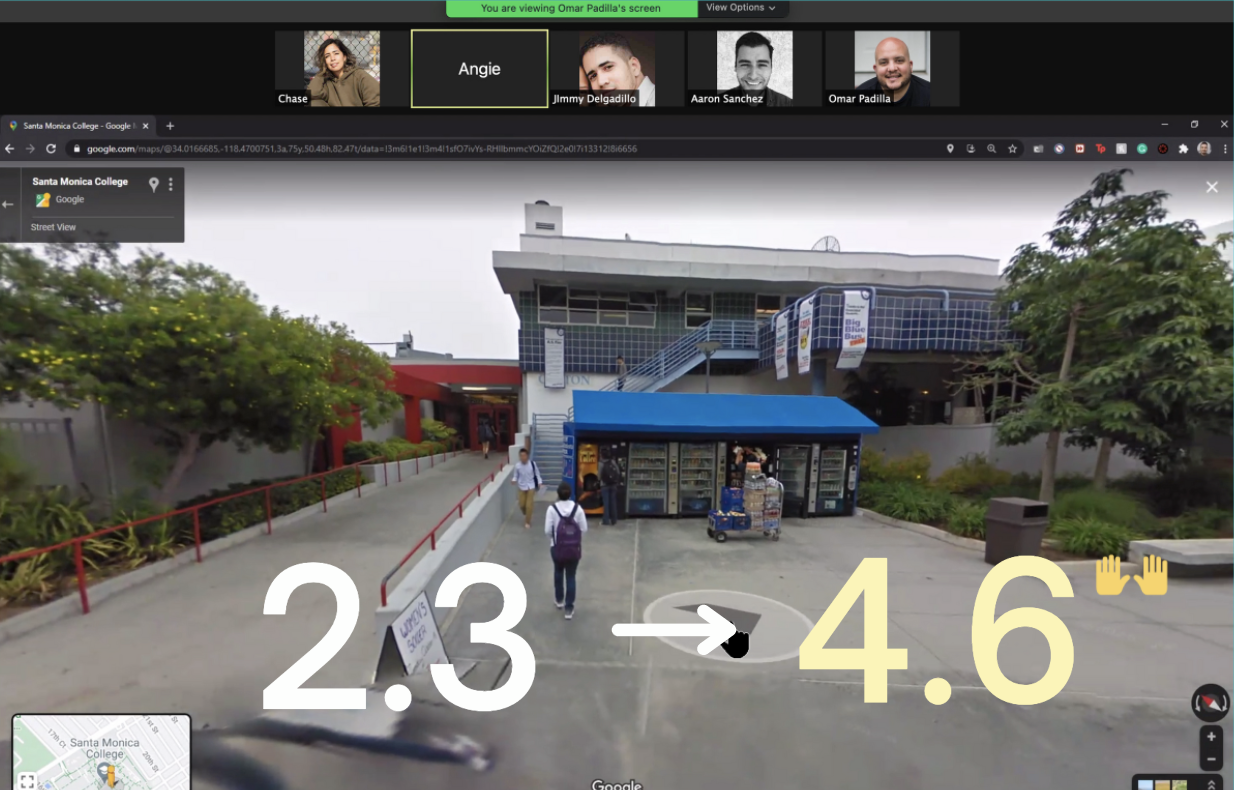
Final deliverables
Christian and I constructed a vision video for Beyond 12 cohorts that IDEO and Beyond 12 could share within their organizations.
We also presented the findings of our research to IDEO and Beyond 12.
Our secondary research indicated that a cohort model could help empower students from underrepresented backgrounds. This directly answered the prompt we were given to elevate student voices through Beyond 12’s platform.
The feedback from our presentation and vision video was very positive, Beyond 12 echoed that a social component to their platform is currently in development and were delighted that our research aligned with the direction they were going in as a company.
We also presented the findings of our research to IDEO and Beyond 12.
Our secondary research indicated that a cohort model could help empower students from underrepresented backgrounds. This directly answered the prompt we were given to elevate student voices through Beyond 12’s platform.
The feedback from our presentation and vision video was very positive, Beyond 12 echoed that a social component to their platform is currently in development and were delighted that our research aligned with the direction they were going in as a company.
Beyond 12 cohorts Vision Video
Reflection
This pace of this sprint was incredibly quick. I was very fortunate to work with such a talented and dedicated team, IDEO and Beyond 12 were also incredible stakeholders to work with, they were supportive and instrumental to the success our project had. I am very proud of the volume and quality of work my team was able to accomplish in such a small amount of time. Navigating a sprint of this intensity during a pandemic and with a very busy team was challenging but also showcased the value of organization, project management and open communication.
With an expanded timeline, I would have liked to have completed more testing of our prototype. I reached out to Beyond 12 and will be assisting them in developing solutions for first generation community college students on their platform.

Call of Duty Companion App: Video Feed
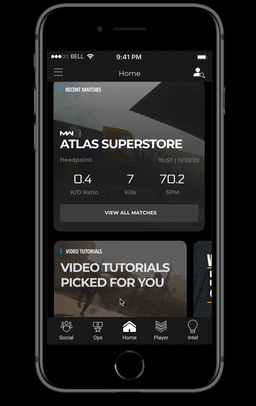


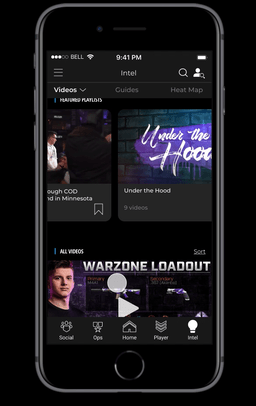
Overview
Brief
“How can the Call of Duty Companion App create social features to keep players engaged with the game and each other?”
Process
Stakeholder/Subject matter expert interviews, Competitive Analysis, Primary research, Secondary research, Prototyping, Remote User testing
Tools
Figma, Miro, Zoom, Google Suite, Adobe Photoshop
Role
UX/UI designer, Content Strategy, Documentation, Research
Partners
Genevieve Johnson, Ami Kubota, Ross Meredith
Sprint Duration
Sprint 1: 8 weeks
Sprint 2: 8 weeks

Challenge
This capstone project was a partnership between the Santa Monica College Interaction Design program and our industry partner Activision.
This project consisted of two design sprints with the focus of fostering community within the existing Call of Duty Companion App.
Sprint 1
Working in teams of two. Ami and I interviewed our stakeholder, consulted domain experts, conducted primary and secondary research, and performed exhaustive analysis of the competition before presenting our findings to Activision.
Sprint 2
The Call of Duty Companion App design team tasked us with merging our group with Genevieve and Ross to synthesize our previous data.
Our teams both were leaning toward video content as a means of maintaining engagement with players.
Sprint 1 Methods
- Stakeholder Interview
- Product Review
-
Secondary Research
-
Competitive Analysis
- Heuristic Review
- Netnography
-
Consulting Subject Matter Experts
-
Interviews with Target Audience
-
Abstraction Laddering
-
Concept Poster
- Storyboarding

Research
The bulk of sprint 1 was devoted to building a knowledge base surrounding what we were designing for. Primary and secondary research was conducted to ensure that we would have a better understanding of the constraints and expectations surrounding the gaming industry, the gaming community, and companion apps.
My secondary research focused on the following social aspects of games that effect player engagement.

I also consulted the following subject matter experts who have or are currently working in gaming. They provided insights on industry norms and expectations.
This knowledgebase proved invaluable and helped frame my research throughout the project.
This knowledgebase proved invaluable and helped frame my research throughout the project.
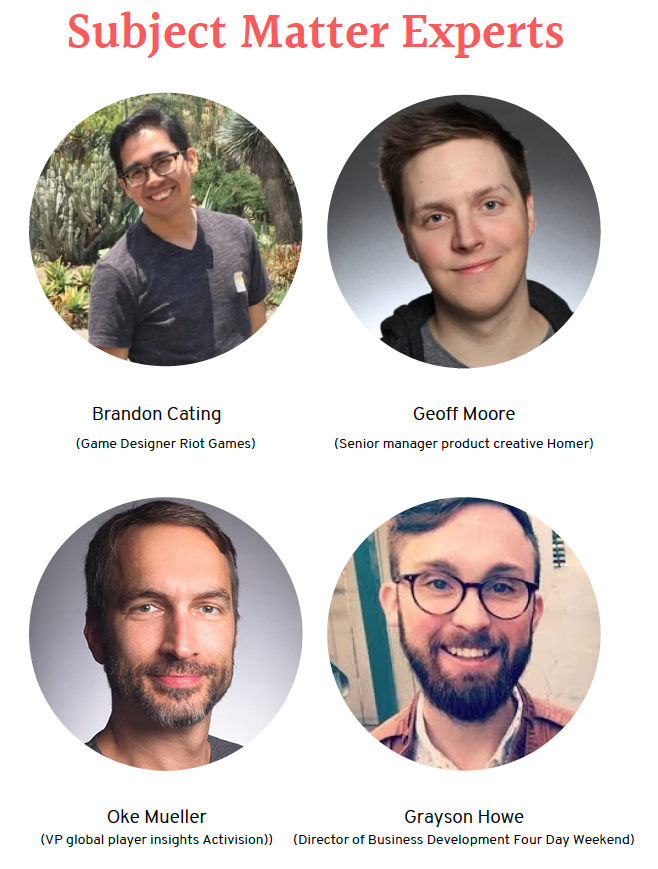
A Competive Analysis, Heuristic review and Netnography were all employed to understand the various features and language utilized within the Call of Duty Companion app and it’s industry competitors.
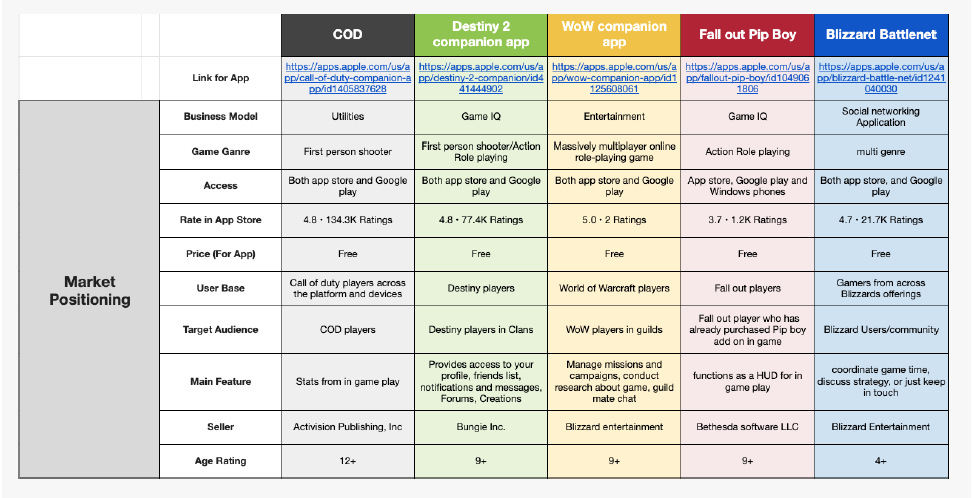
Excerpt from Competitive Analysis

Excerpt from Heuristic Review

Excerpt from Netnography
Interviews
I interviewed three individuals in the gaming community who play Call of Duty, and asked for their opinions on the app as it currently stands.
David is a hardcore gamer who is very interested in his in game stats but wants more out of the app.
Josh and Ian are more social in there approach to game, the app in its current state didn't really appeal to them.
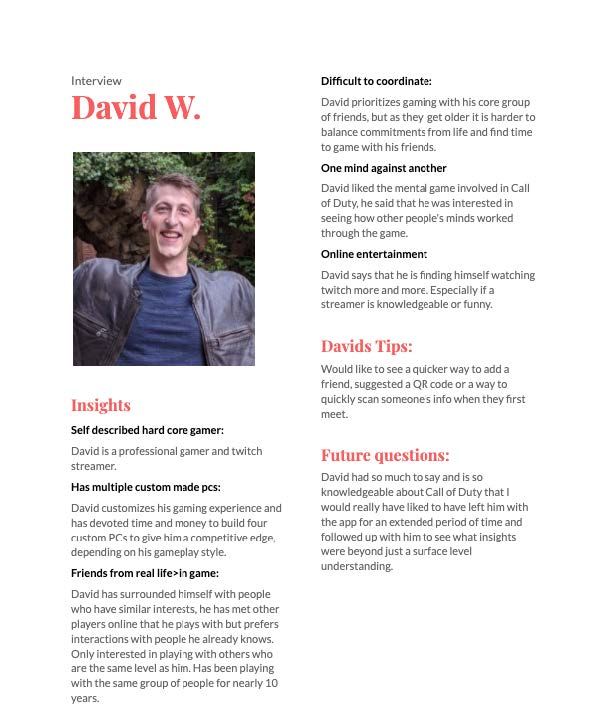

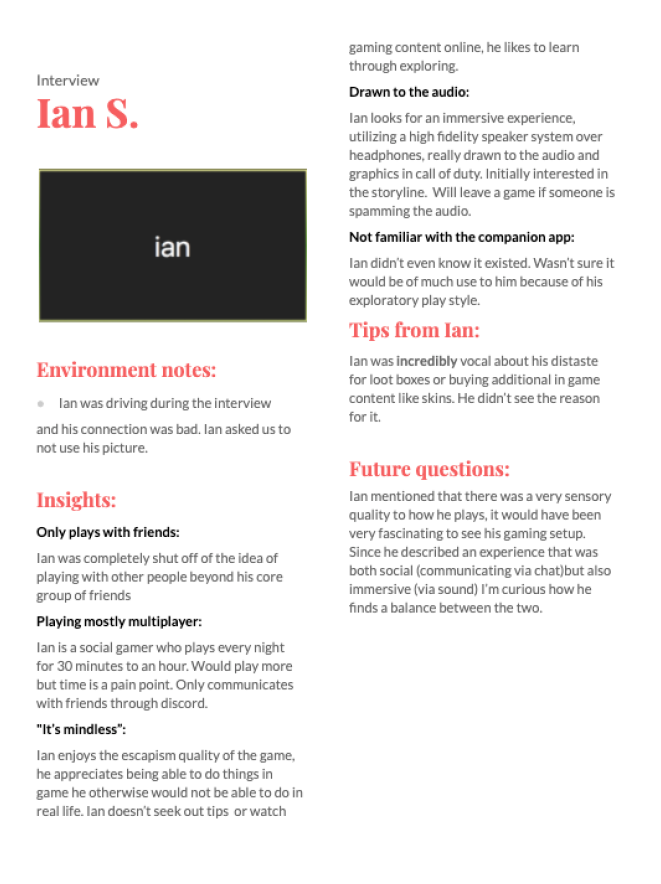
Interviews
The Problem
The Call of Duty Companion app currently caters to a hardcore user. Casual and beginner players did not identify with the offerings on the app and were not finding it useful.
Our solutions going forward would need to speak to both of these users, the hardcore player that has displayed loyalty to the franchise and is eager to improve their game, and the casual gamer that is looking for a more social and light gaming experience.
Concept Development
To convey our idea to the stakeholder, multiple exercises were employed to ensure our message would be clear.
-
Applying an abstraction ladder exercise to further define the problem
-
Creating a concept poster to refine the offering and pitch
-
Revising the storyboard after a dry run to refine the concept
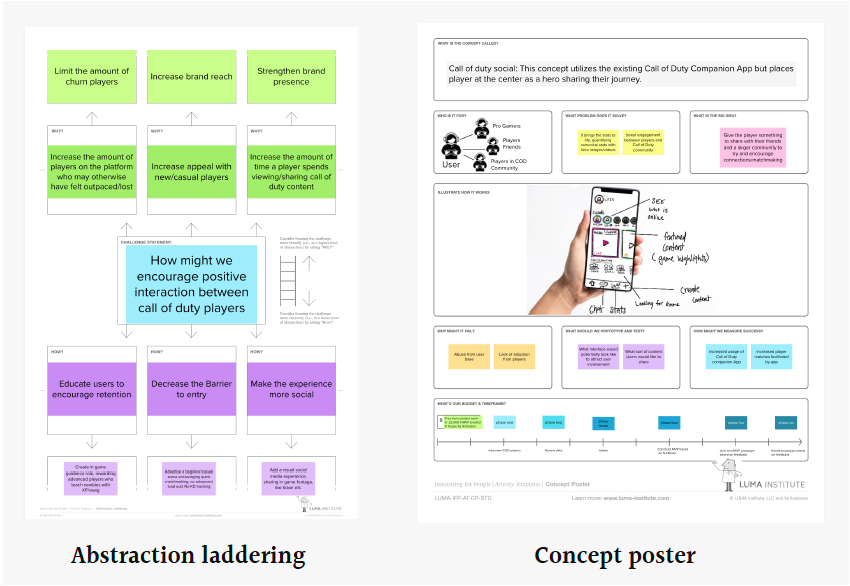

We presented our video to a group of Activisions designers.
Our video detailed our research insights, included our proposed changes and also introduced an ideal scenario depicting our two gamer archetypes having their pain points met through suggested features.
Our video detailed our research insights, included our proposed changes and also introduced an ideal scenario depicting our two gamer archetypes having their pain points met through suggested features.
Video of suggested changes from Sprint 1
Sprint 2 Methods
- Card Sort
- Storyboarding
-
Scenario Creation
-
Feature Prioritization
-
Information Architecture
- Content Strategy
- Wireflows
-
Updating Sitemap
- Wireframe Construction
- Interactive Prototype Construction
- Remote Usability Testing

Synthesis
Reaching a point where our newly formed team of four felt comfortable that we were all on the same page took some time.
Card sorting, exploring information architecture within the app, sharing research and forming storyboards together helped unify the vision of the project going forward. We kept in close contact with the design team at Activision and referred back to our prior research before moving forward with a change statement that reflected a unified purpose for the project.
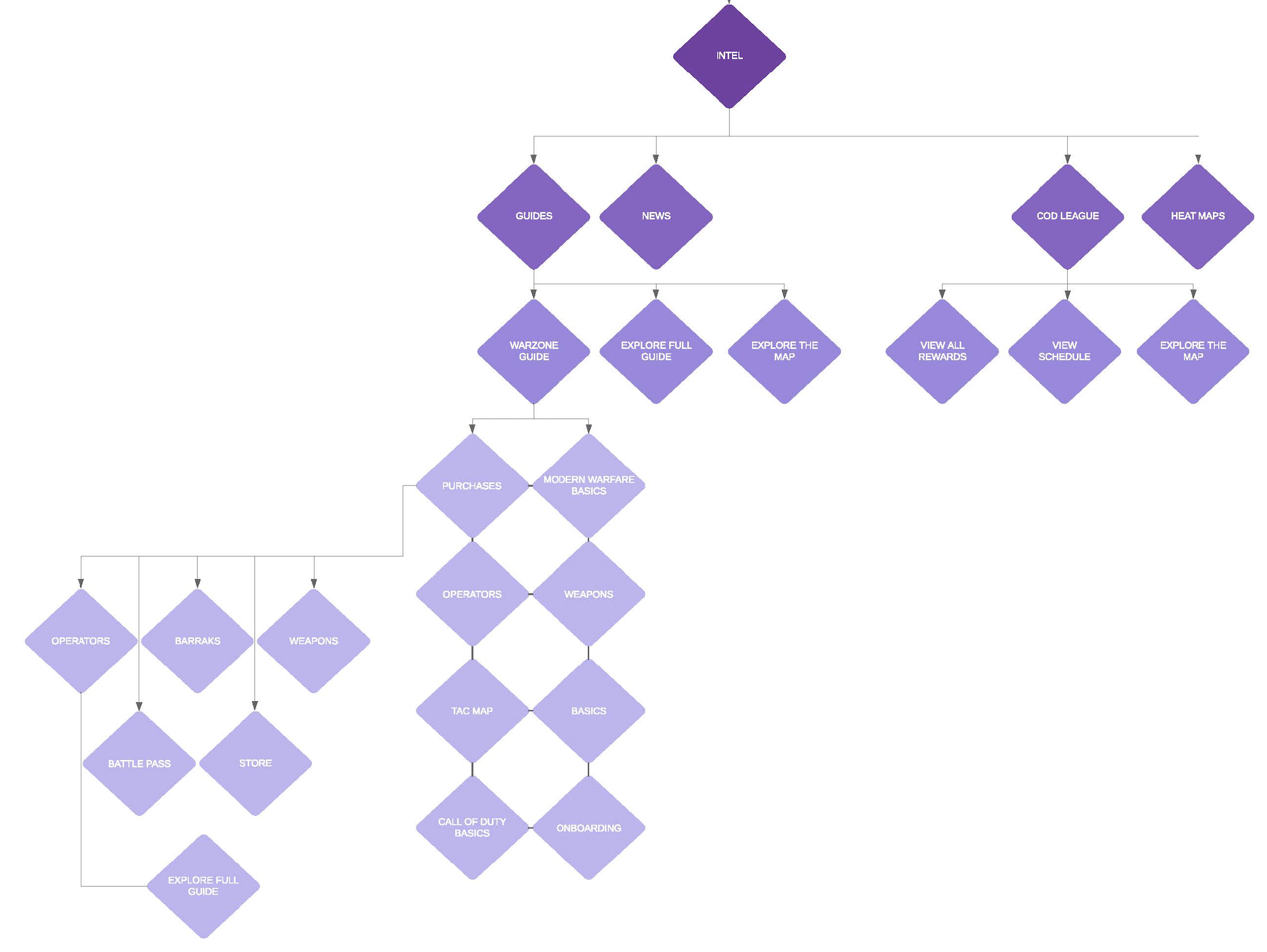
Excerpt from Site Map (Intel Page)

Research
Storyboards would prove beneficial in identifying pain points for the three scenarios we would go on to develop.
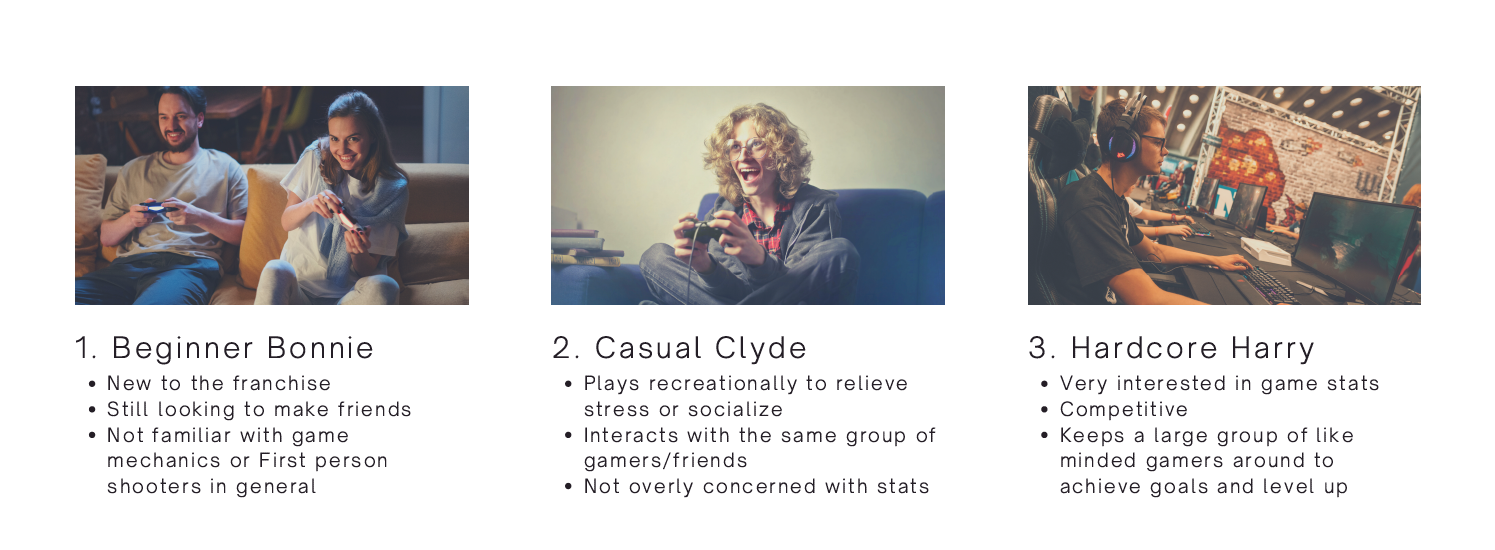

Wireflows were constructed for the three scenarios and shared with the design team at Activision.
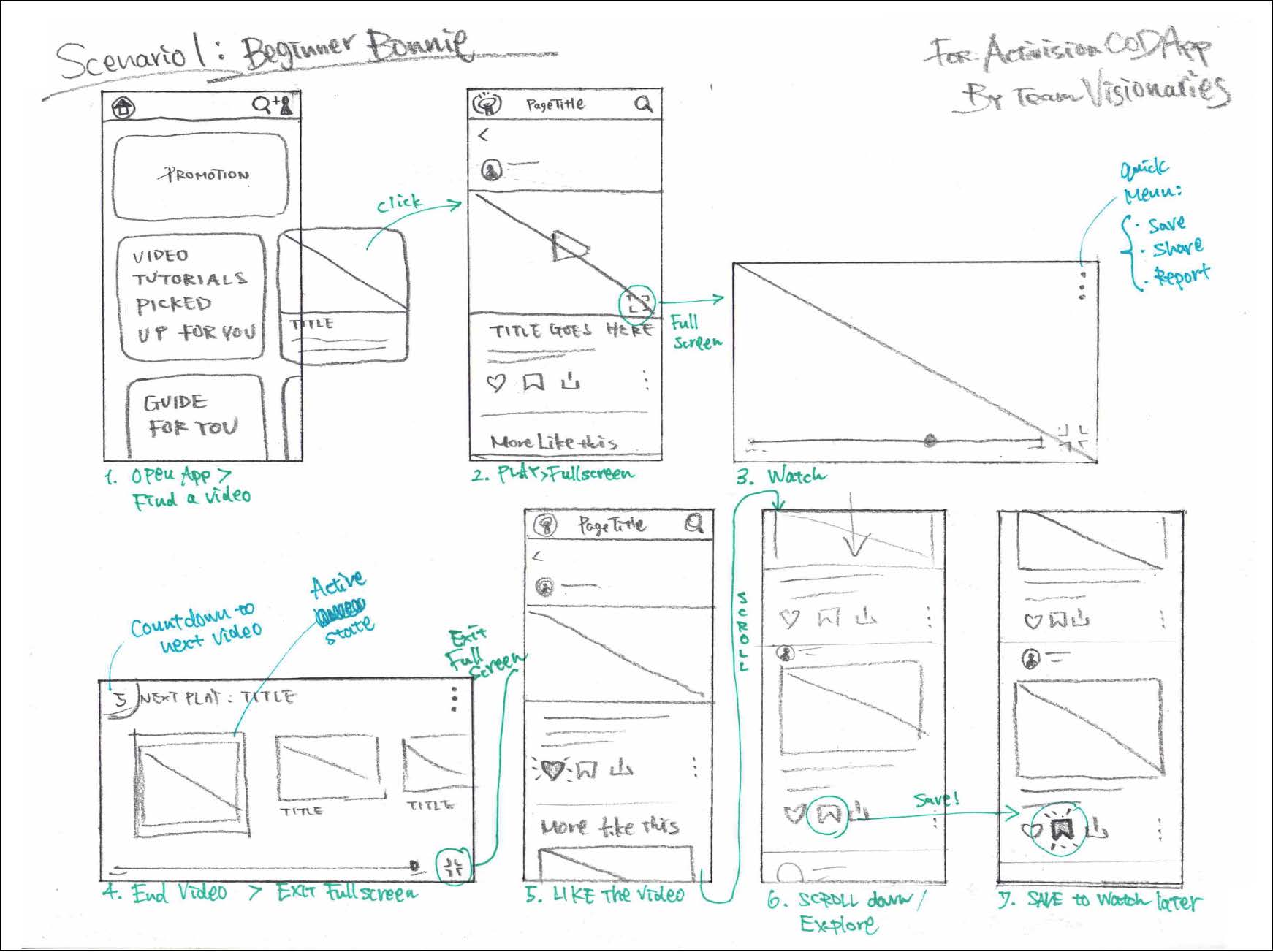




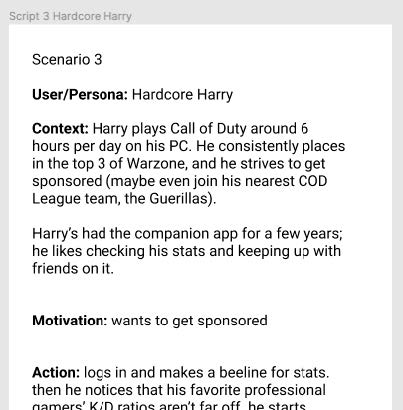

The three scenarios would be distilled at their advisement to one scenario for us to focus on.

This scenario would go on to inform the creation of our wireframes and high fidelity prototype.

Testing
Due to the circumstances with the Covid-19 pandemic our team conducted all testing of our prototype remotely. We met with participants from Activisions testing pool via Zoom.
This posed both benefits & drawbacks. Virtual sessions let us meet Call Of Duty players from a wider geographical region, which was great. On the flip side, it also meant they had to explore the app with a mouse on a monitor, rather than tangibly hold the phone as one would in real life.
We chose Zoom due to its ability to screen share while also allowing us to view a participant and also record a session simultaneously.
Our group conducted one hour testing sessions with our 6 participants.



Testing Insights
After testing with the participants we identified these trends in their pain points and priorities.
- Controls and navigation needed to be updated for accessibility
- Users care about independant content creators
- Users want detailed information on weapons
-
The ability to have advanced search filters was very important
We used these insights to inform changes for the final version of our prototype that we presented to Activision.


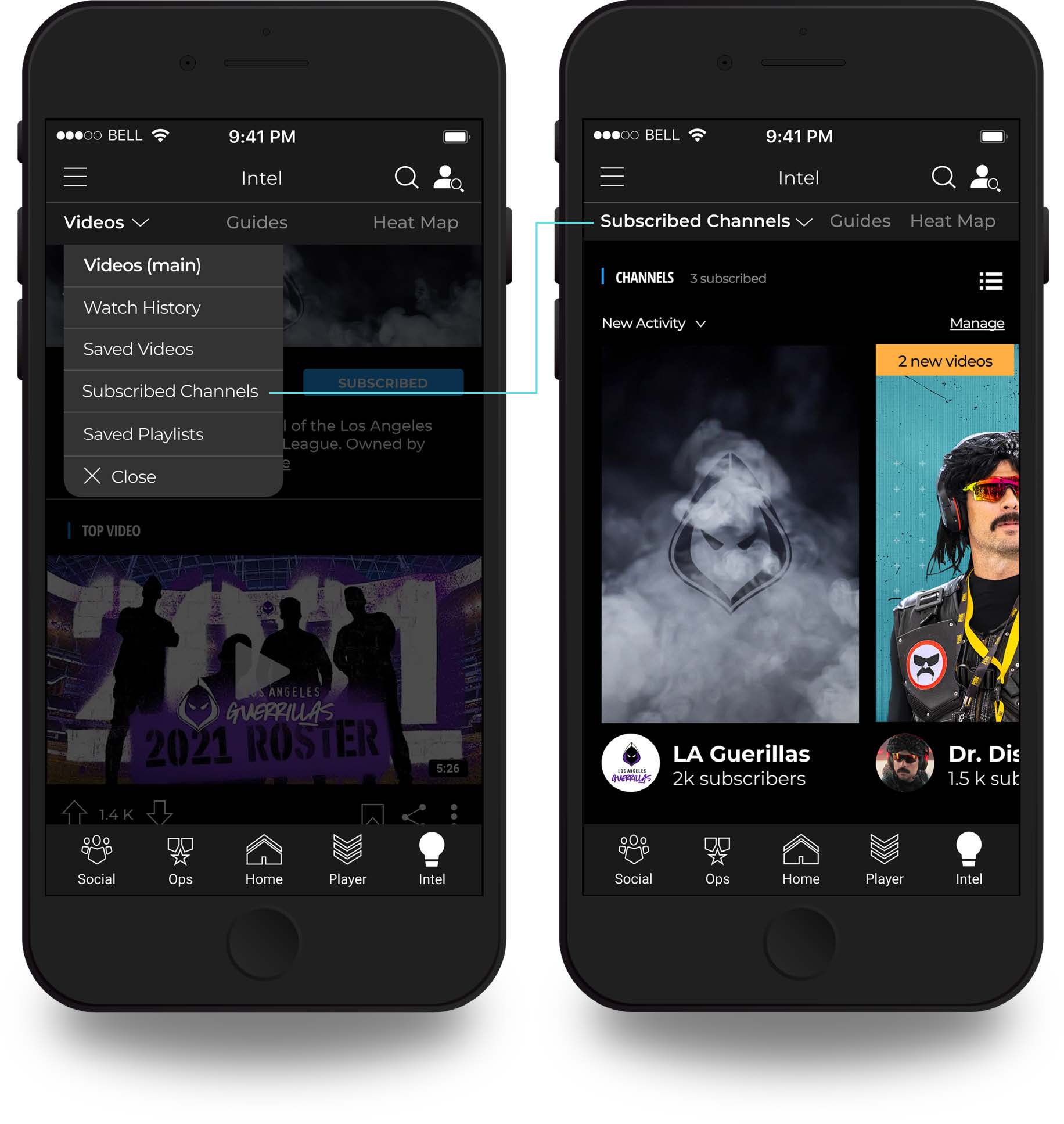

Final Revised Prototype
Reflection
This project was one of the most challenging tasks I have had to complete as a designer. Navigating user testing and team collaboration during a pandemic was not ideal, nor what any of us had envisioned for our capstone project. However, the opportunity to work with such an involved and dedicated stakeholder like Activision provided a supportive space to rise to the challenge. Through the guidance of Activision's designers and the diligence of our team, we were able to complete a project which we are all incredibly proud to call our own.
Given more time, we would have liked to have completed more A/B testing, specifically to get further insights on elements like the navigation architecture and potential search bar locations.
Overview
Brief: “How might we simplify multi-modal travel for Santa Monica College students?”
Process:
Stakeholder/Subject matter expert interviews, Primary research, Secondary research, Prototyping, User testing.
Role:
Project Lead, UX/UI designer
Partners:
Ruby Storey, Ralph Buan




Metro Chat Features
- Filter route suggestions
-
Integrated Santa Monica College ID card
- Integrated Tap Card
- Machine learning voice companion
- Optimized travel based on user mobility preferences
Challenge
My team wanted to fully understand the concerns of our users, the site we selected to observe and work from was the Metro station that serves Santa Monica College/17th street.
My team did multiple rounds of observations, conducted walkthroughs from the site to Santa Monica College, and conducted contextual interviews with students in and around the station.
My team did multiple rounds of observations, conducted walkthroughs from the site to Santa Monica College, and conducted contextual interviews with students in and around the station.

Key Stakeholders
- Metro
- City of Santa Monica
- Affiliate multi modal services (Bird, Lime, Jump, Uber, Lyft)
Identify User Needs
My team conducted a group whiteboard session in an attempt to look at our problem from a birds eye view.
This session saw us pivot dramatically in our focus. My team had initially envisioned Metro Chat as a safety companion for female student riders.
The people we spoke to had reported that multi-modal travel felt daunting in general, and those were our experienced riders.
My team needed to simplify multi-modal travel, we developed these goals:
My team conducted a group whiteboard session in an attempt to look at our problem from a birds eye view.
This session saw us pivot dramatically in our focus. My team had initially envisioned Metro Chat as a safety companion for female student riders.
The people we spoke to had reported that multi-modal travel felt daunting in general, and those were our experienced riders.
My team needed to simplify multi-modal travel, we developed these goals:
- Engage more student riders
- Maintain the helpful assistant in the app.
- Align our users needs with the cities goals of a more mobile future.

White Board Session

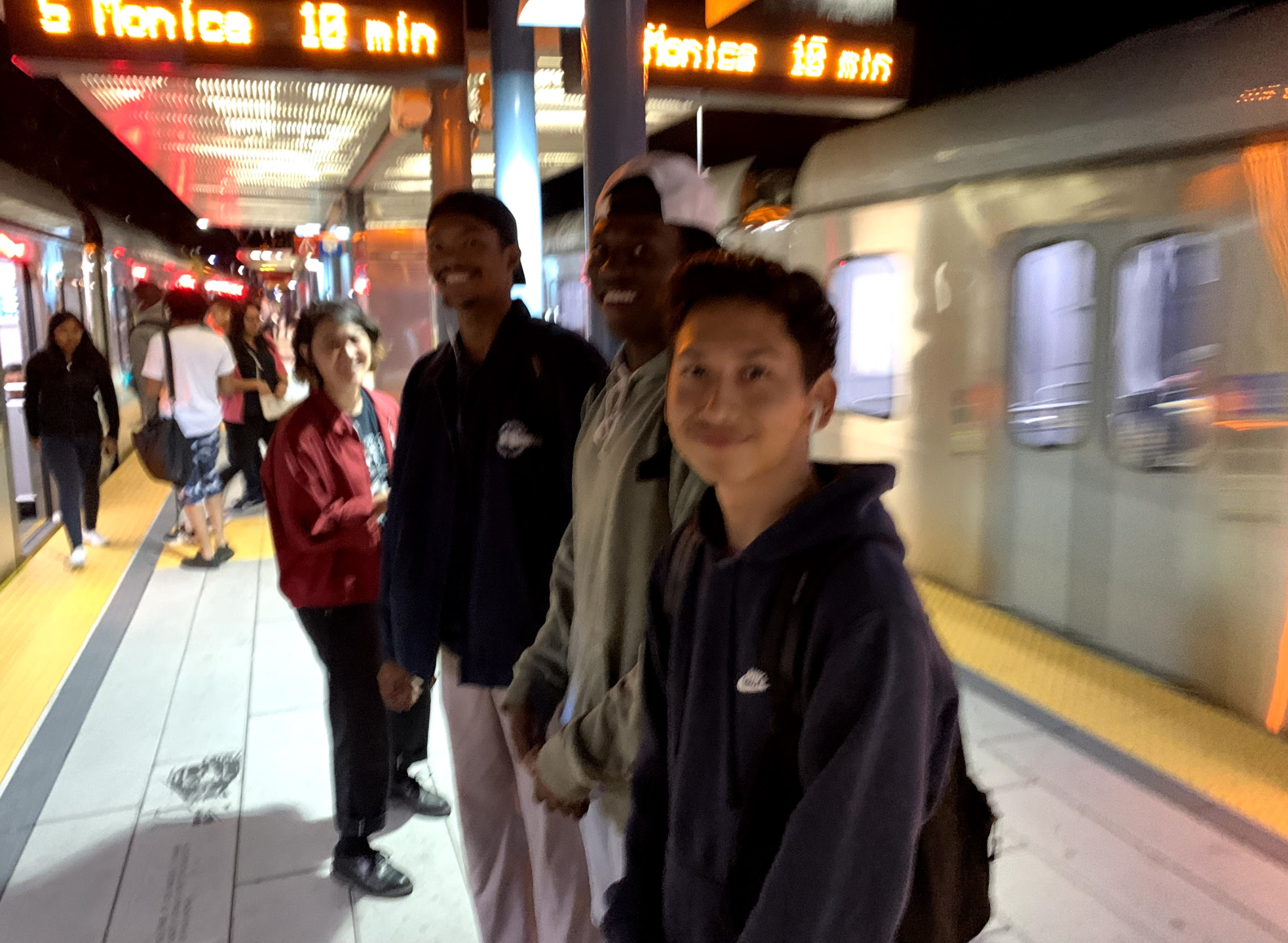


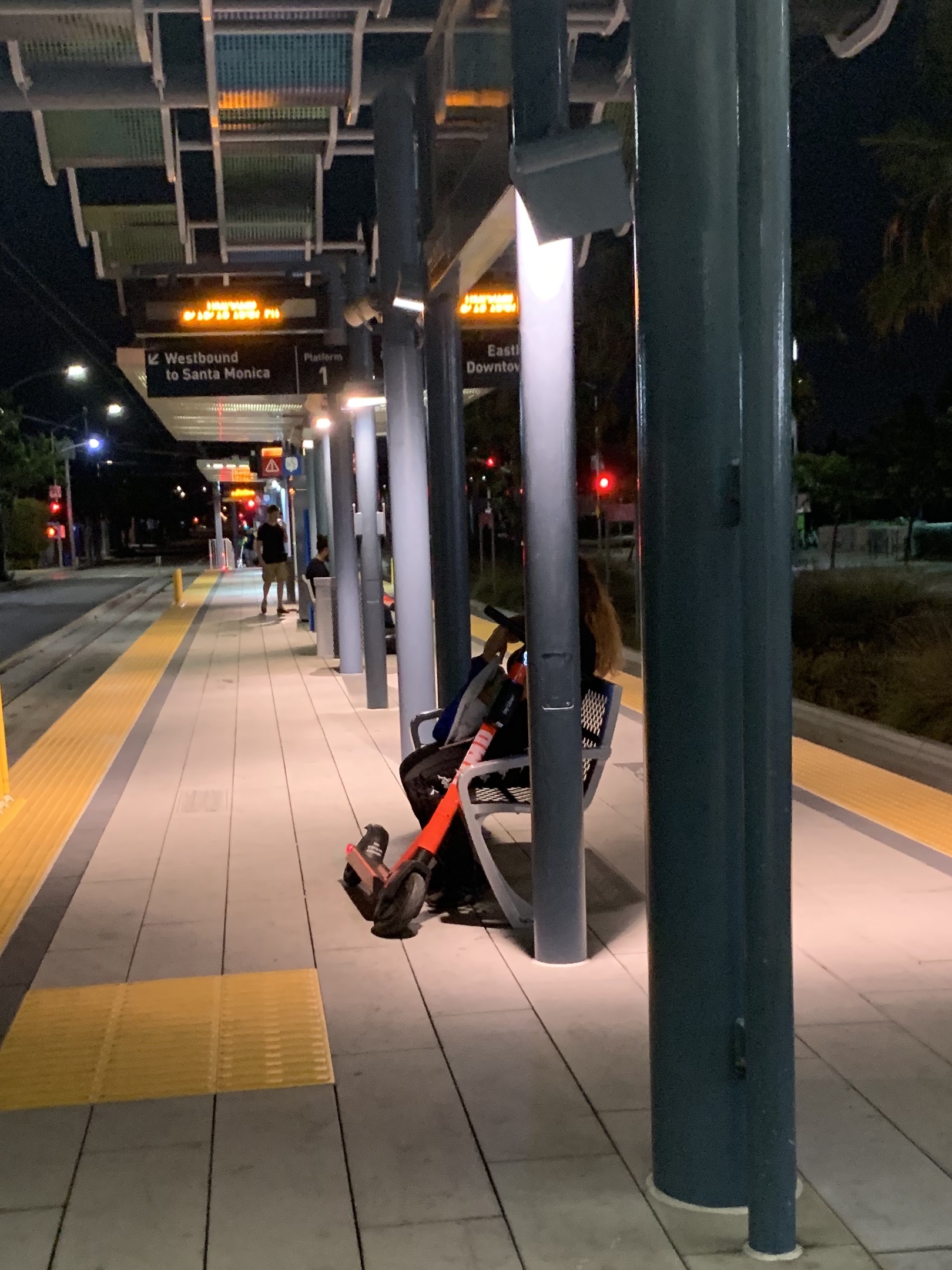

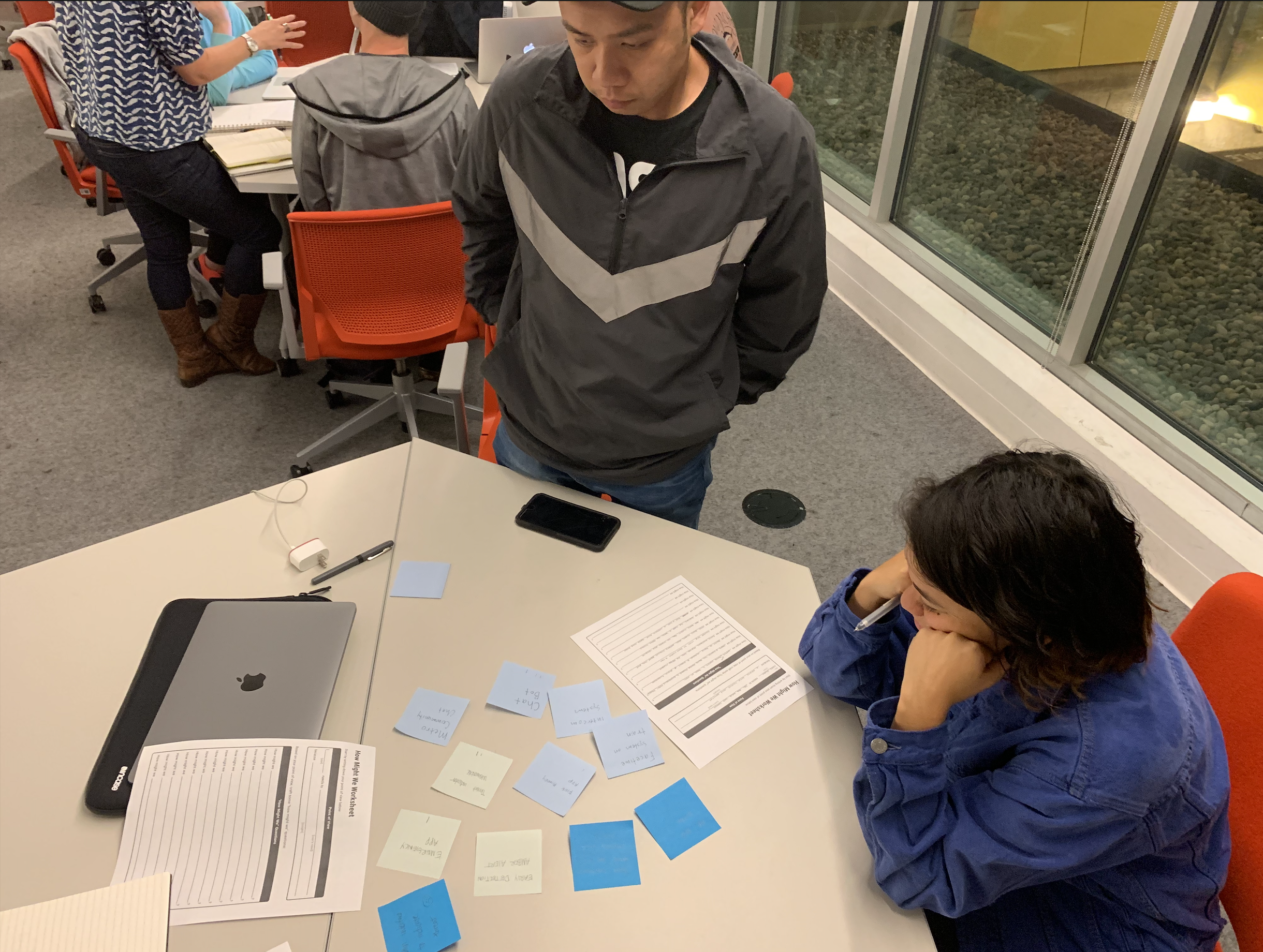

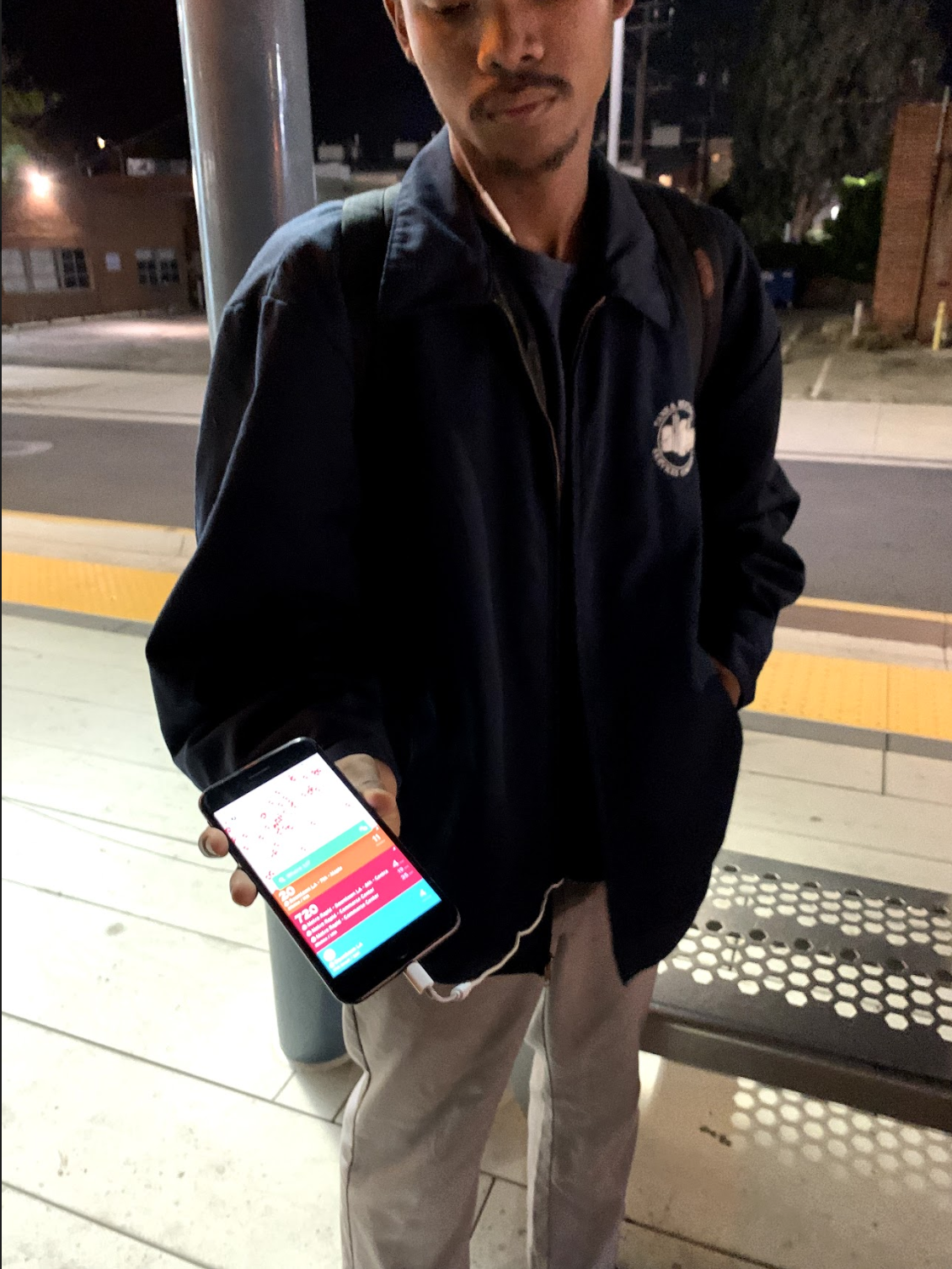
User Interviews, Ideation Sessions
“Depending on the time of day or how fast I need to get somewhere is what
determines what I take to get somewhere. I usually just take the train..” -Kimberly
“Besides the train or the bus, I’ll sometimes walk or take an Uber.
I’ll take an Uber if i’m running late to class.” -Arnold
“The Google transit app tells me one thing. When I close it
and open it up again, it’ll tell me something completely different.
It can make you late. The bus doesn’t wait for you.”
-Tim
determines what I take to get somewhere. I usually just take the train..” -Kimberly
“Besides the train or the bus, I’ll sometimes walk or take an Uber.
I’ll take an Uber if i’m running late to class.” -Arnold
“The Google transit app tells me one thing. When I close it
and open it up again, it’ll tell me something completely different.
It can make you late. The bus doesn’t wait for you.”
-Tim

Persona
Research
- Santa Monica Colleges student mobility reports.
-
Take The Friendly Road initiative the City of Santa Monica is implementing.
- Emerging technologies.
- Competitive technologies, i.e. Transit App, Metro App.
A large portion of the student body is dependent on public transportation and multi-modal travel to arrive at school and there is a lack of coordination between the offerings in Santa Monica preventing them from doing so efficiently.
Why couldn’t public transit operate just like google maps does for a car commuter?
Why was it all so hard, in a city that was positioned at the forefront of technology?
I frequently re-visited our audio recordings and images to confirm our secondary research. I used that information to create our persona Karla.
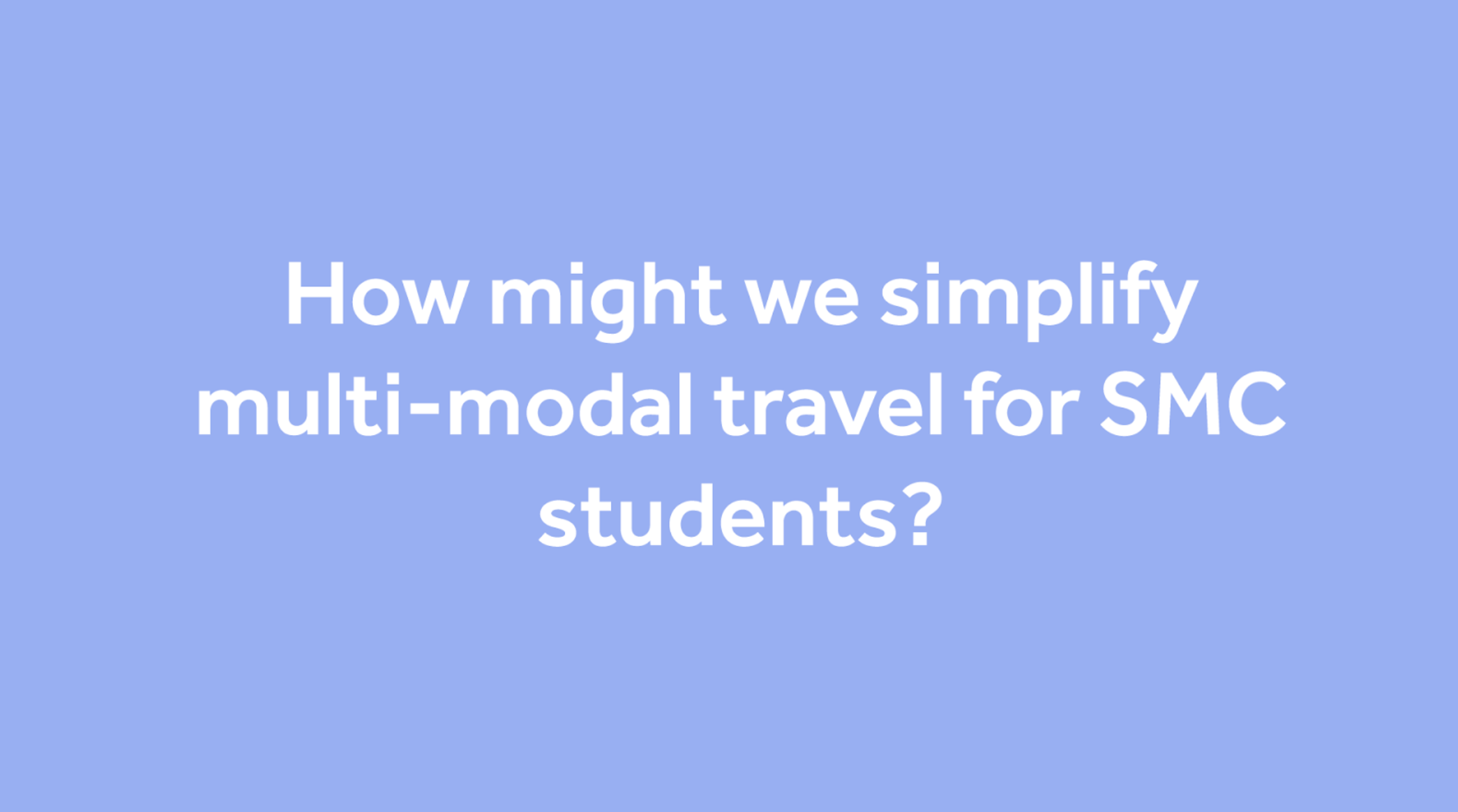
Problem Statement
Testing
My team created three seperate iterations of our prototype.
Phase 1:
My team gathered initial feedback on UI elements and features other students might like to see with a paper prototype and a concept poster.
Goals
My team created three seperate iterations of our prototype.
Phase 1:
My team gathered initial feedback on UI elements and features other students might like to see with a paper prototype and a concept poster.
Goals
- Quickly convey our initial offering to our intended users
- Identify if this service could address a pain point for our intended users
- Did we need to pivot our focus or drill deeper into multi modal travel?




Testing Paper Prototype



Participatory Design Exercise
Phase 2:
My team placed wireframes inside sheet protectors and gave them to Santa Monica College students along with dry erase markers. We encouraged them to show us what worked, what didn’t and what we needed to include to fit their mental model of what the app should feel like.
Goals
My team placed wireframes inside sheet protectors and gave them to Santa Monica College students along with dry erase markers. We encouraged them to show us what worked, what didn’t and what we needed to include to fit their mental model of what the app should feel like.
Goals
- Gain insights about what features our intended users wanted/expected
- What sort of travel options did we miss or over potentially over emphasize?
Phase 3:
My team tested our clickable prototype with more Santa Monica College students. Ralph simulated the interaction users would experience with our chatbot using a script we had developed ahead of time.
Goals
Prototype reception:
The prototype received very positive feedback. We were very pleased that our testers quickly understood that the purpose of our prototype was to simplify their travel by learning their preferences.
My team tested our clickable prototype with more Santa Monica College students. Ralph simulated the interaction users would experience with our chatbot using a script we had developed ahead of time.
Goals
- Would users be able to navigate an integrated single payment structure?
- Would users find interacting with our chat bot to be intuitive?
Prototype reception:
The prototype received very positive feedback. We were very pleased that our testers quickly understood that the purpose of our prototype was to simplify their travel by learning their preferences.
“So..basically..this is a shortcut to navigating the 5,000 apps
I have on my phone to already get places? Thats pretty convenient!”
-TraceyTesting Adobe XD clickable prototypeTesting Adobe XD clickable prototype
I have on my phone to already get places? Thats pretty convenient!”
-TraceyTesting Adobe XD clickable prototypeTesting Adobe XD clickable prototype



Testing Adobe XD Clickable Prototype

Team Metro Chat
(left:Ruby Storey, Will Gamez, Ralph Buan)
Reflection
This project illustrated to me that our guiding principle throughout the project was true, trust in the research and allow it to guide your path.
I feel like my team made something that truly speaks to not only the concerns of our target users but to the larger community it could potentially serve.
I would still like to share our concept with a representative from the city of Santa Monica or Metro.
This project illustrated to me that our guiding principle throughout the project was true, trust in the research and allow it to guide your path.
I feel like my team made something that truly speaks to not only the concerns of our target users but to the larger community it could potentially serve.
I would still like to share our concept with a representative from the city of Santa Monica or Metro.
Overview
Brief: “Design a third party desktop website where the community can celebrate shared stories together through communal and authentic experiences”
Tools:
- Adobe XD
- Adobe Photoshop
- Zoom
- Google Suite
- Miro
Team: Ross Meredith , Marcelo Layera
Sprint Duration: 47 hours
Ideation
Working under a very tight deadline, my team held an initial group meeting via zoom. We utilized a Miro board to work out our ideas for the concept collaboratively. We wanted to empower independant film makers from under represented groups, by providing them with a platform to share their content that also afforded them the ability to connect with their audience. Inspired by the DIY spirit of other streaming services like Kanopy, soundcloud and independant film festivals like Sundance we arrived at a concept that would allow content creators direct access to the people who were viewing their content.


Proposed Site Map/Ideation Session
Style guide
We wanted to draw attention to the logotype, a soft salmon color was modern, inviting but also bold enough to stand out against the bright white pages of the website.
Typography was kept modern, light and minimal.
Goals for users
- Present a platform for indie content creators that felt contemporary and sleek.
- Offset beautiful bright photography with a healthy balance of negative space to maintain a light feeling while browsing.
- Establish consistency throughout the pages that would allow the various photography and content creators to have their own space without feeling disconnected from the platform
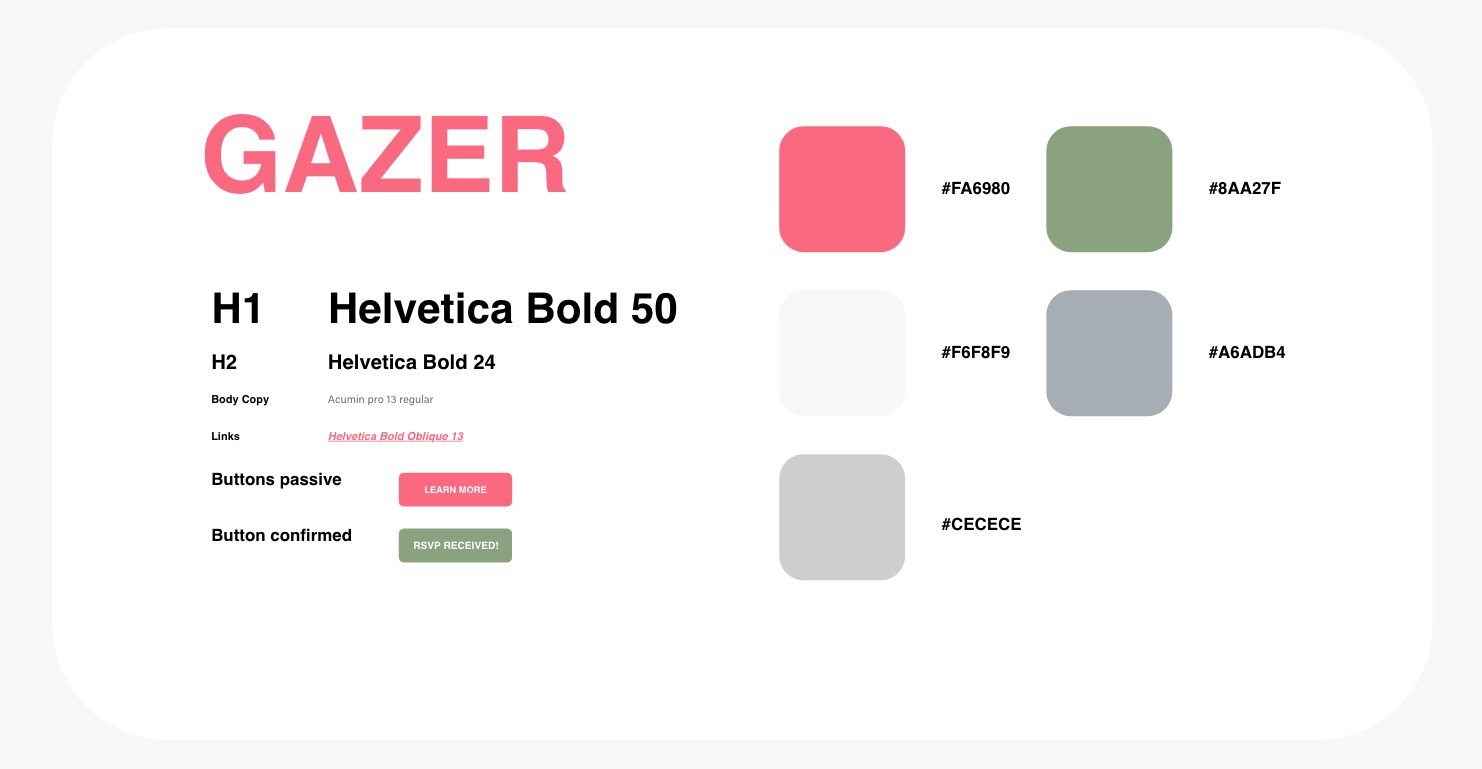
Style guide
Home Page
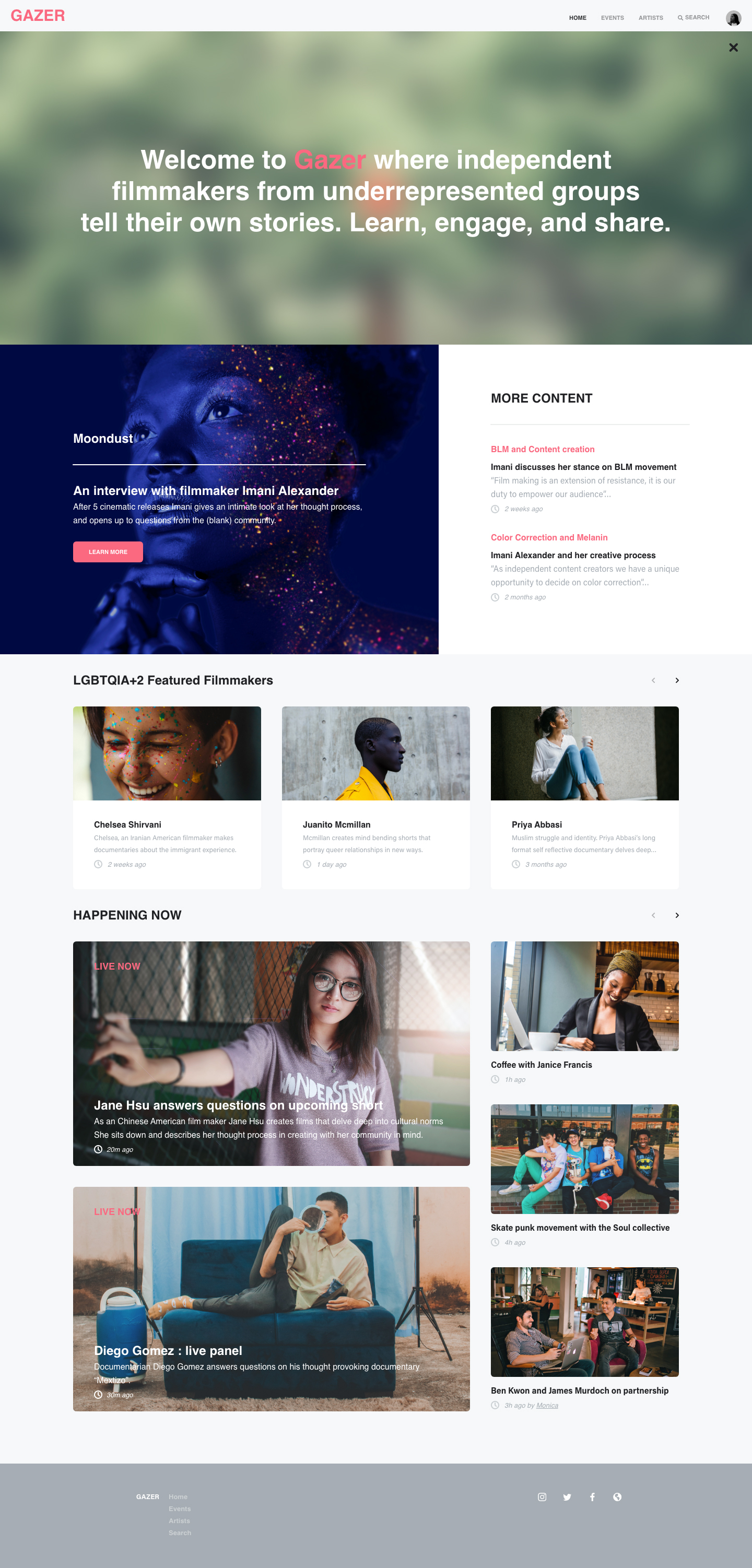
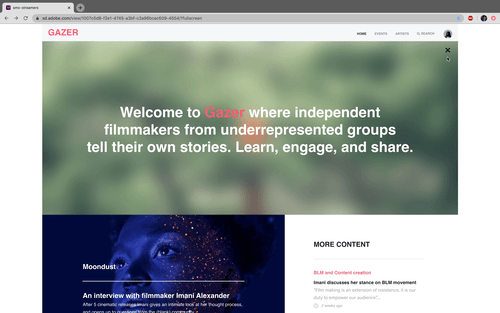
- Present enticing imagery to promote engagement with videos
- Highlight featured content creators
- Provide access to currated content based on user media preferences
Live Events


Goals:
- Provide access to meet and greet sessions with content creators
- Open communication and discussion to foster a sense of community
- Create an experience that is collaborative between content creators and audience
Video Player
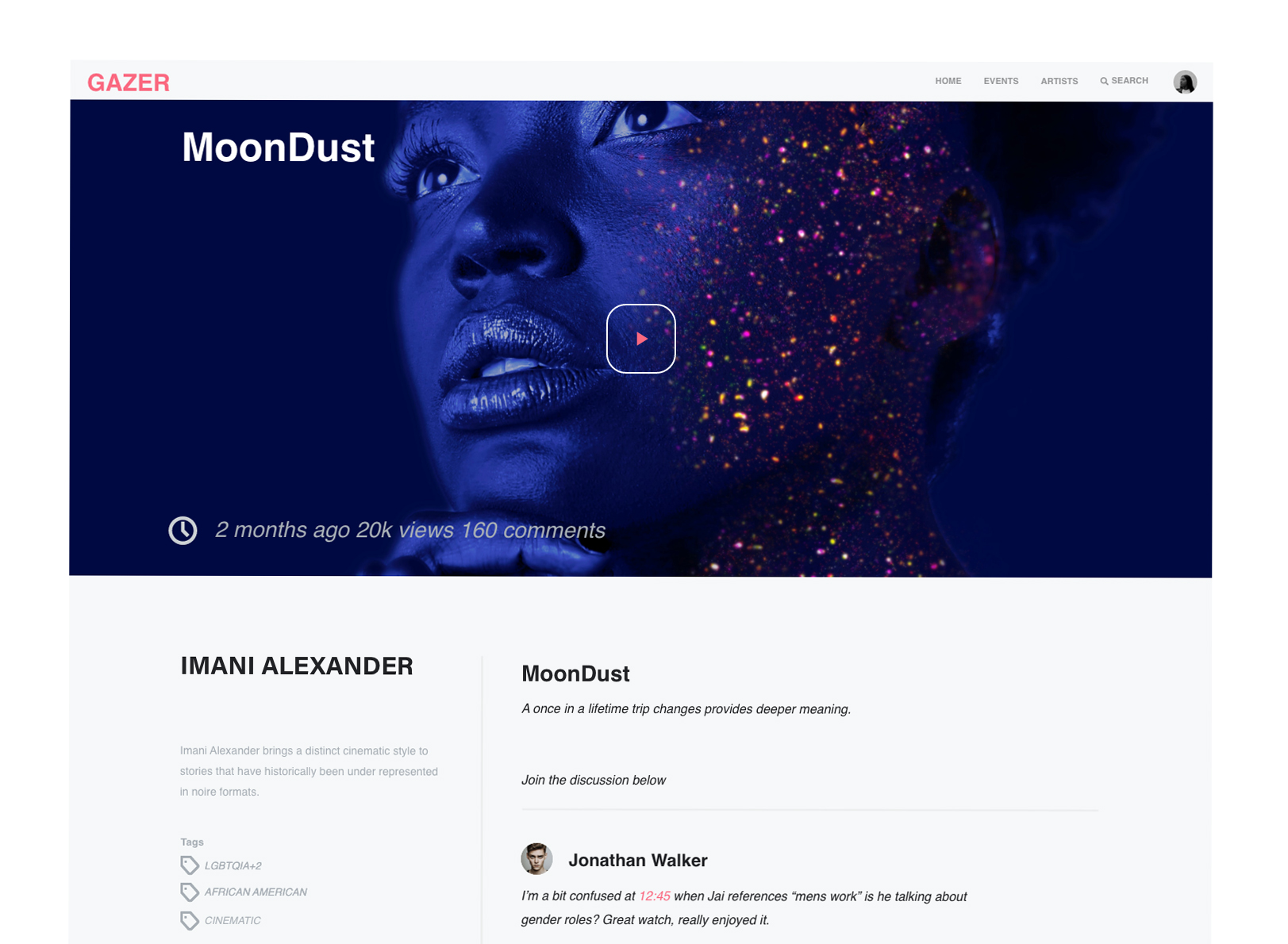

- Basic video playback
- Integrated comment section
- Time stamping in comments allowing viewer to jump to video sections
- Spoiler Alert feature to allow users to discuss content freely
Artist Profile
![]()

- Showcase the collective works of a content creator
- Provide information about the artist through Bio and relevant tags
User Profile

Goals:
- Provide the viewer a place to access saved and recommended content
- Quickly deliver messages and replies left in video discussion feeds
- Afford the user the ability to edit and save preferred video tags
Reflection
This project had the quickest turn around I have ever experienced. There were logistical issues that plagued my team. My partners were only able to help me for the first 24 hours which was largely devoted to planning and strategy. While the planning and strategy gave a very clear direction for the project the bulk of the UI construction was left to me, and after designing for 12 straight hours I was left with a project that I feel very proud of. My biggest takeaway from this project was just how much I was able to accomplish in such a short amount of time. The constraint of only being able to use Adobe XD proved to be very valuable as well. XD is an incredibly useful tool for rapid prototyping, and I look forward to becoming more and more proficient with it.

